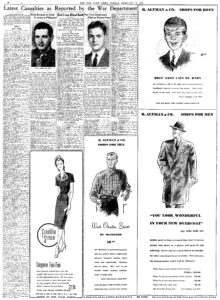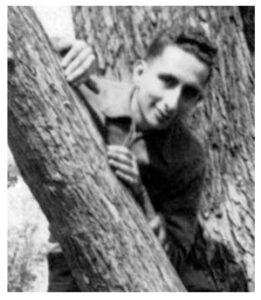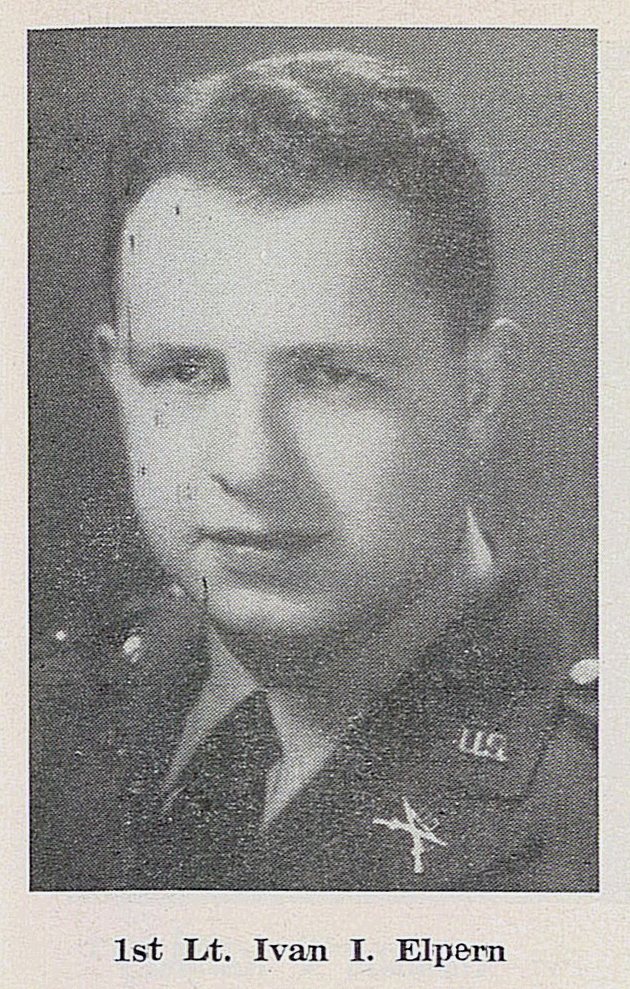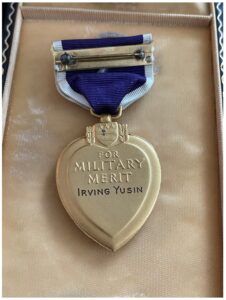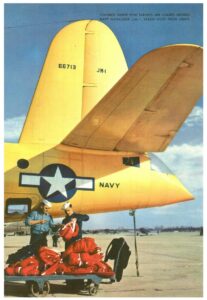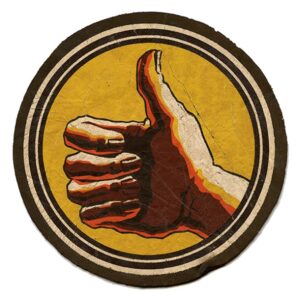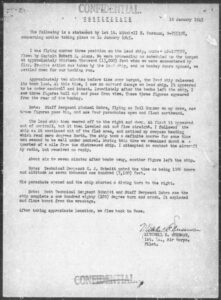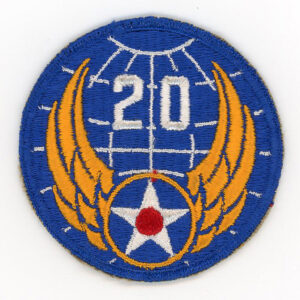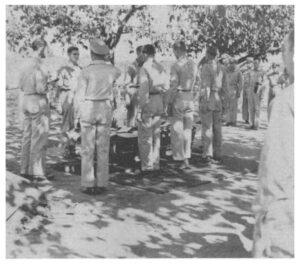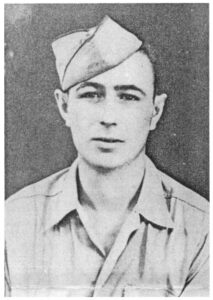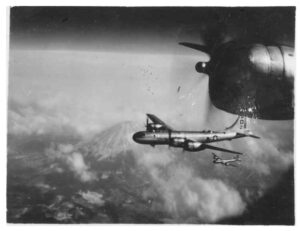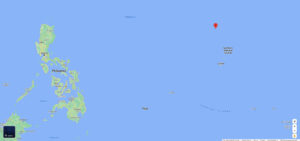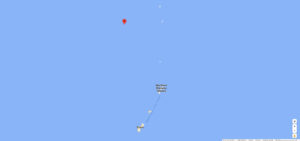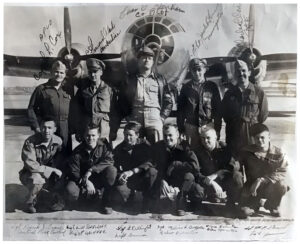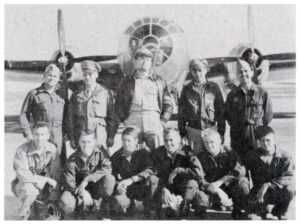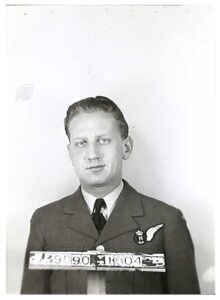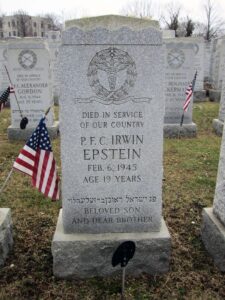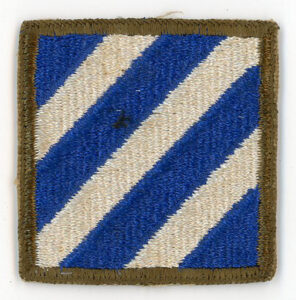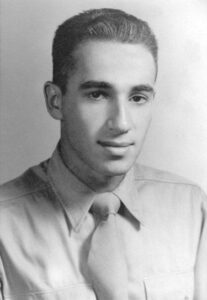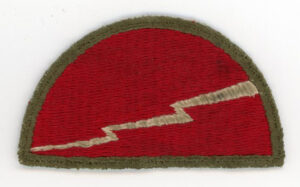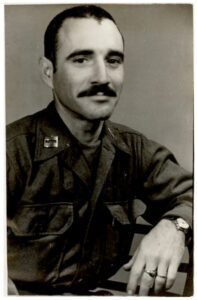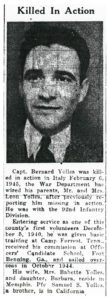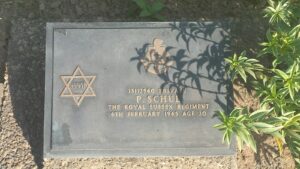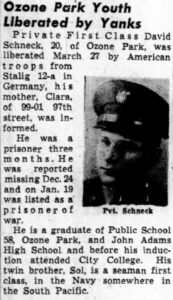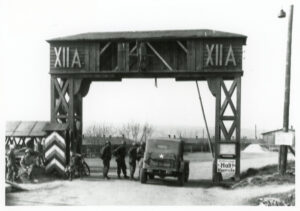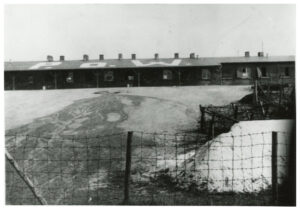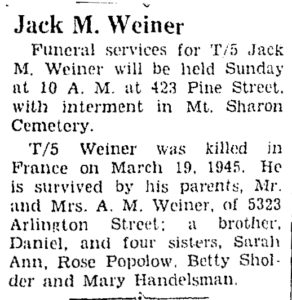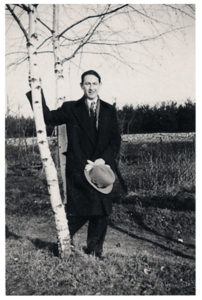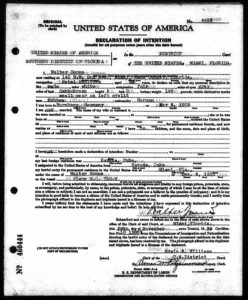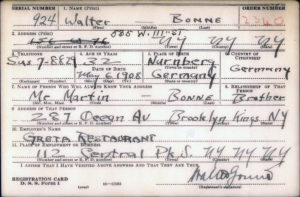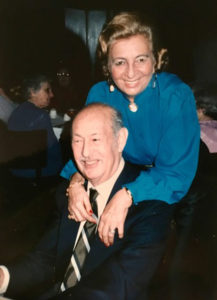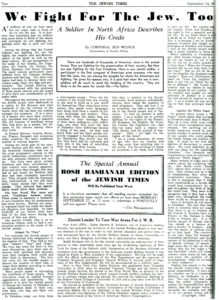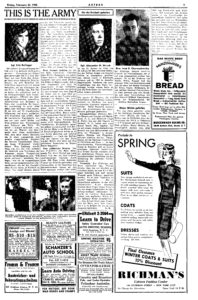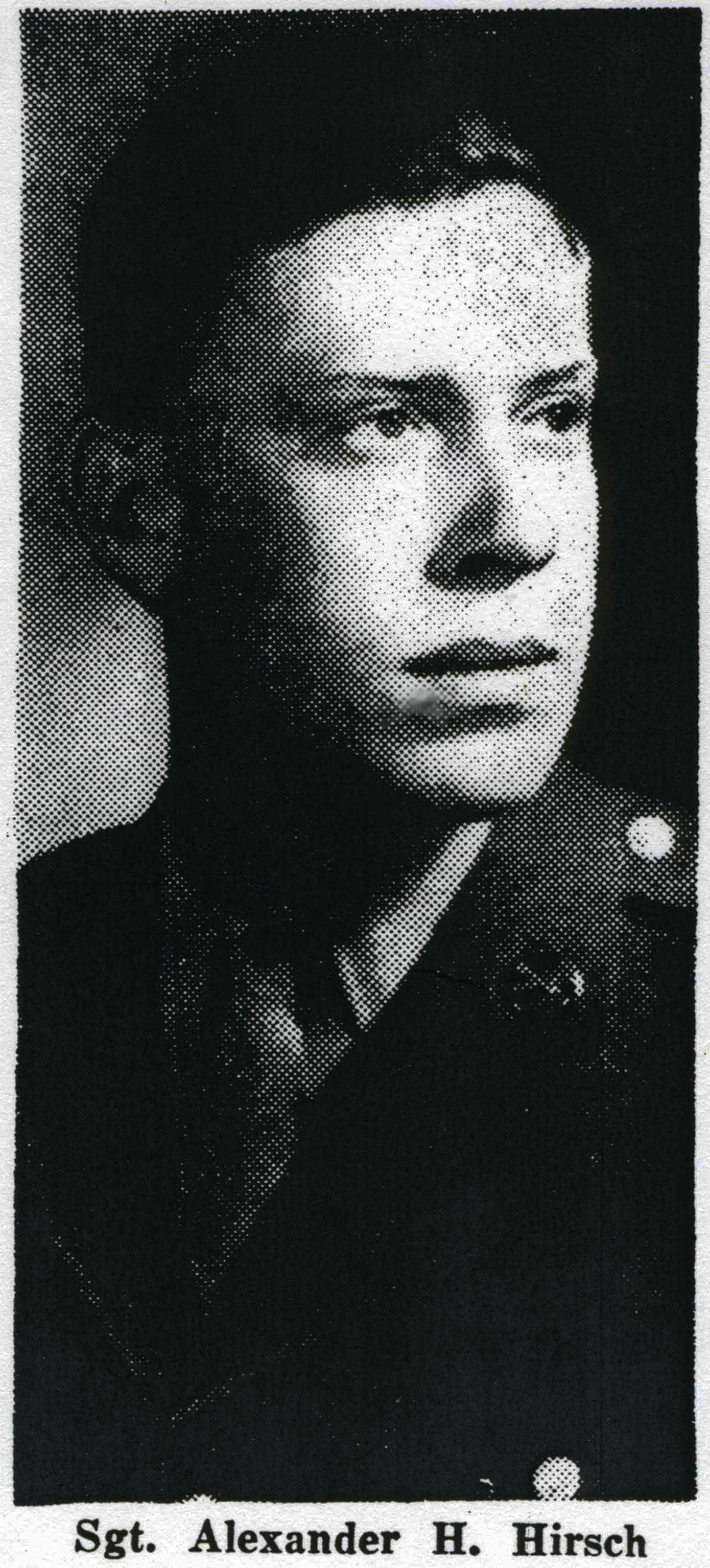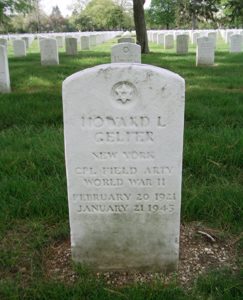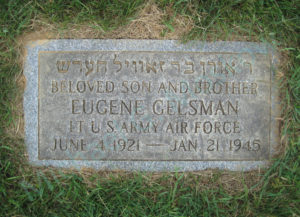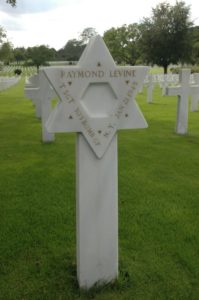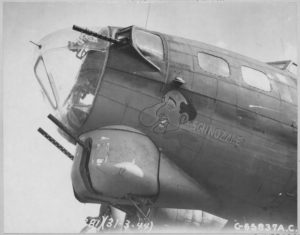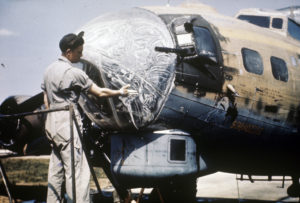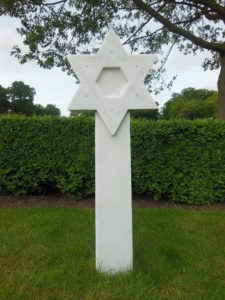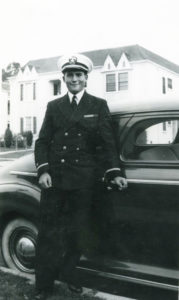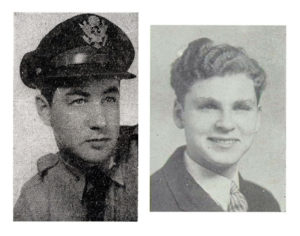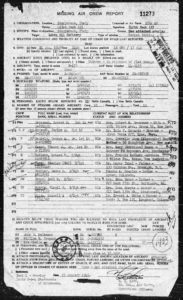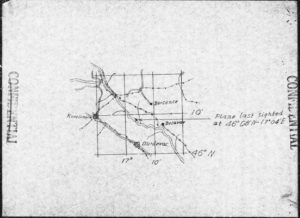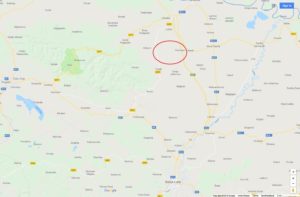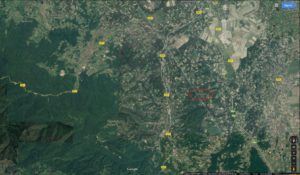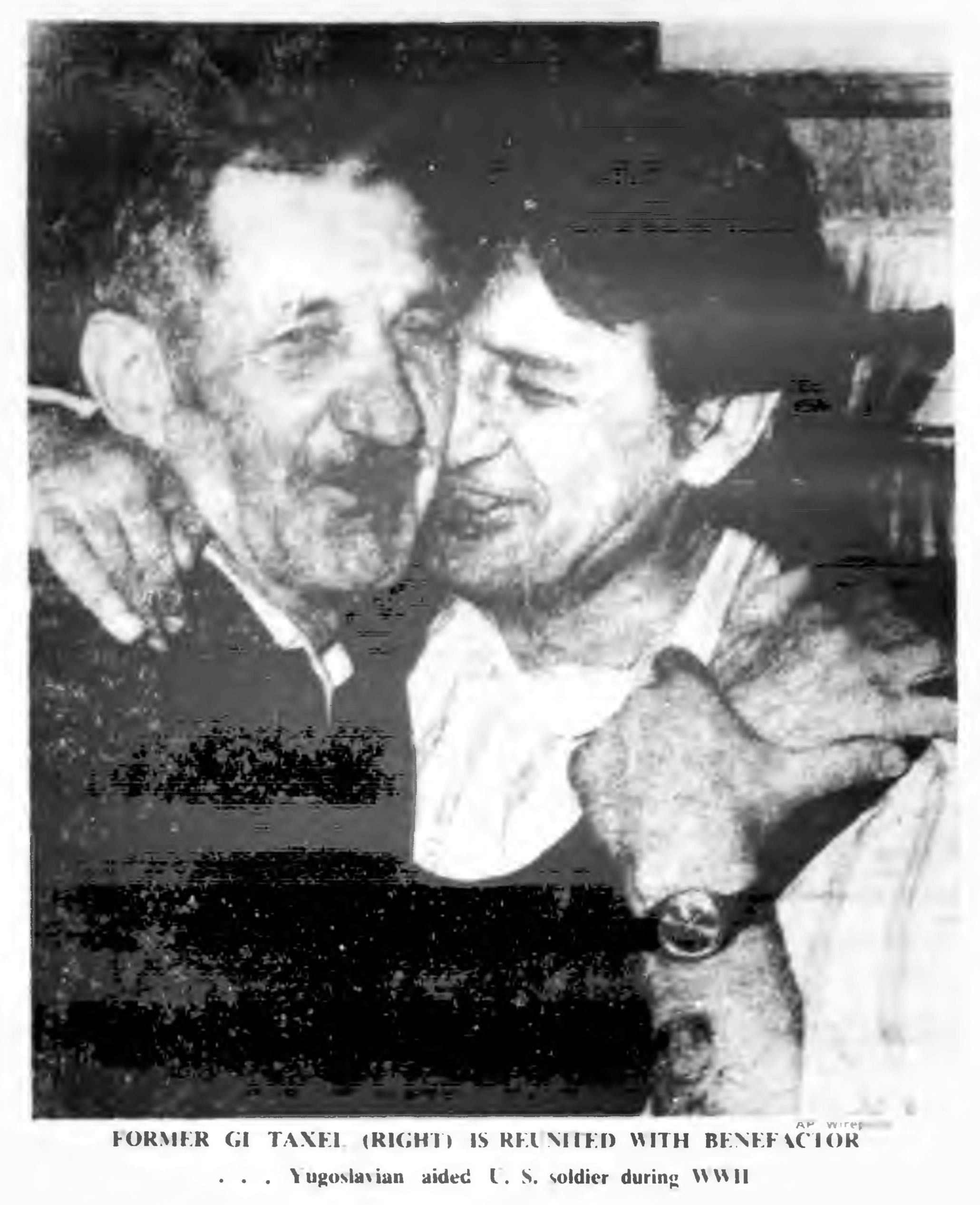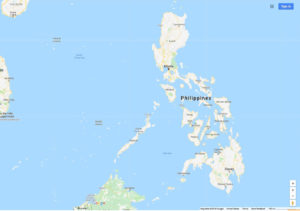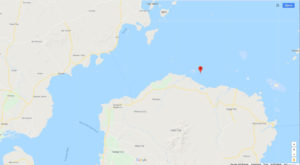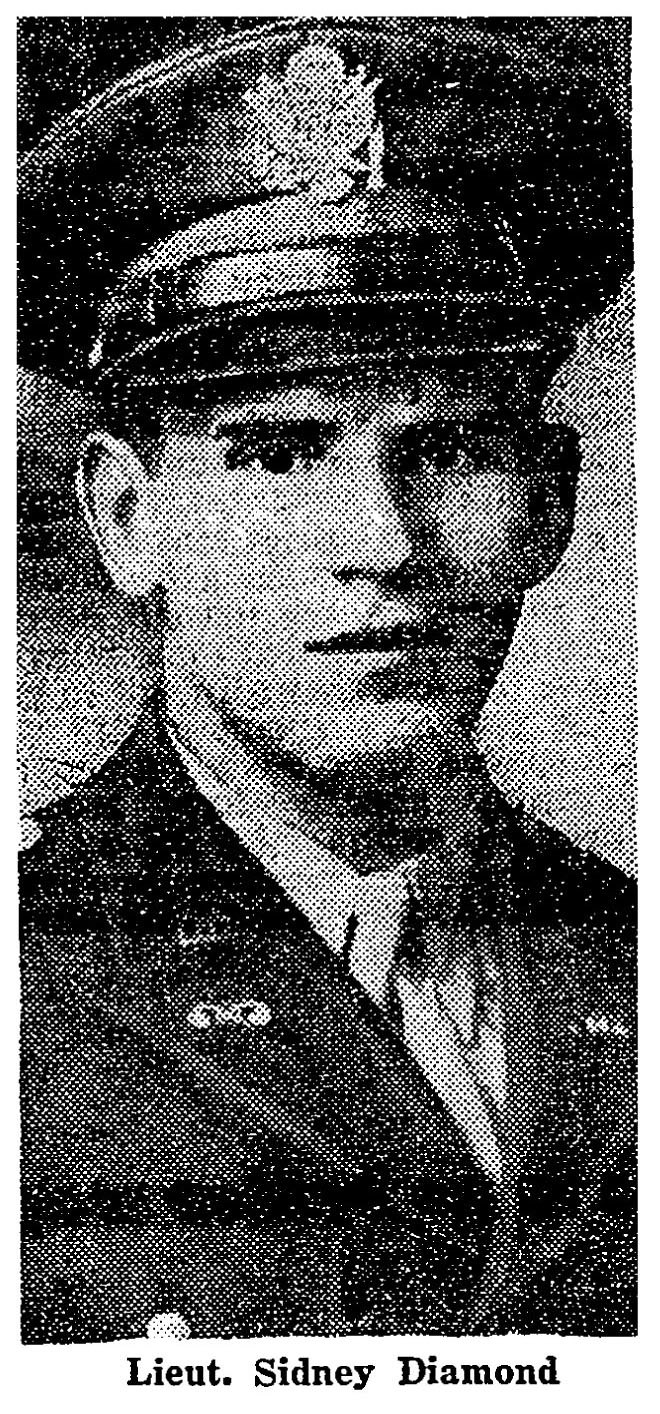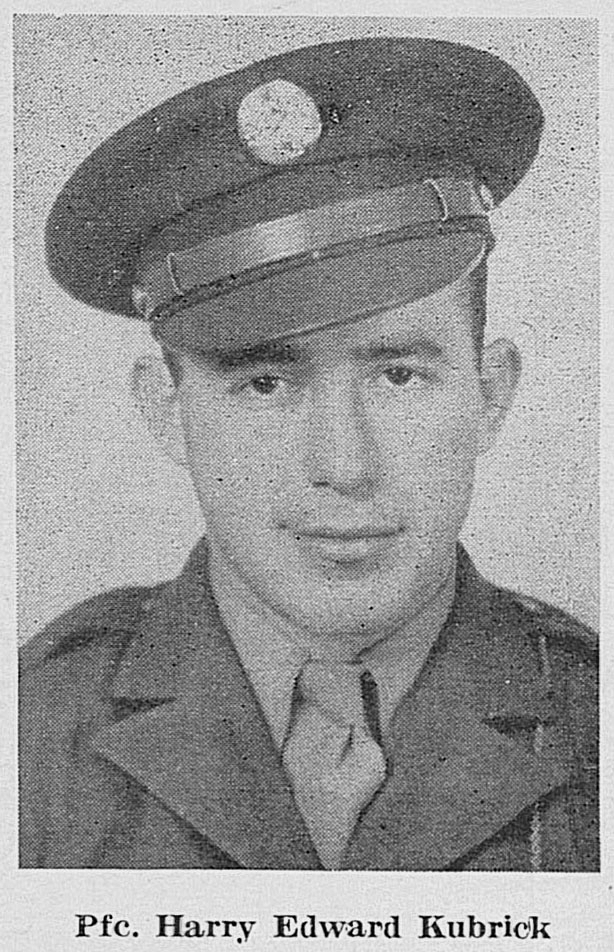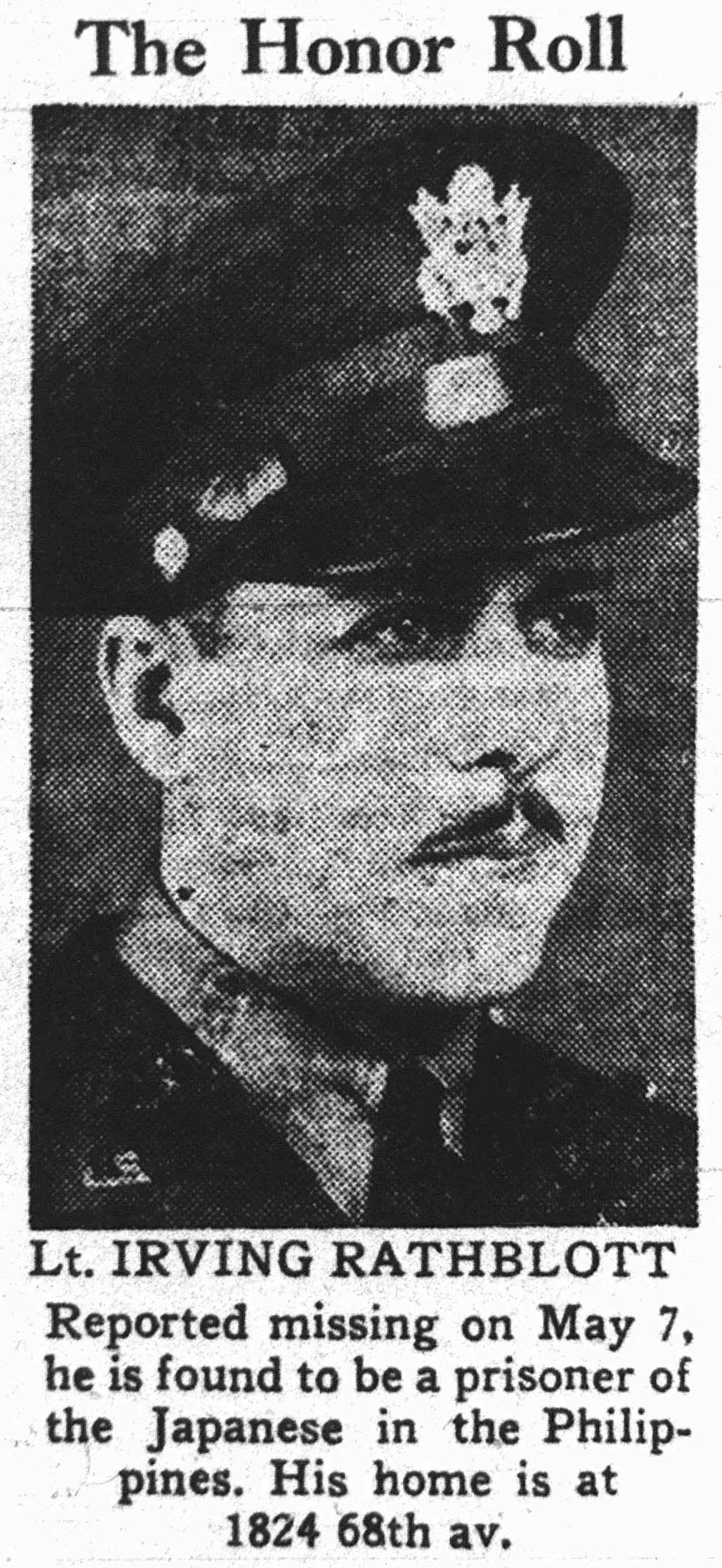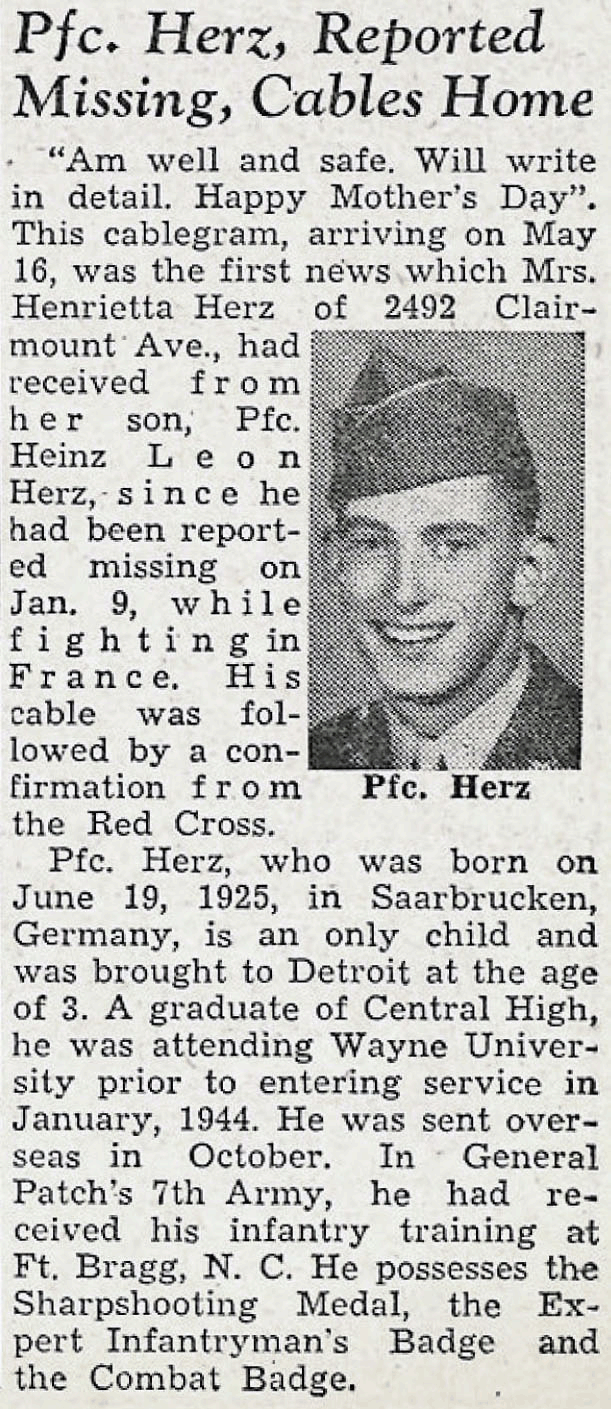[Created “way back when” – in August of 2018 – this post – focusing on November 26, 1944 – has now been updated, with additional information primarily pertaining to the 8th Air Force’s mission to the Deurag-Neurag oil refinery at Misburg, Germany. New material comprises the following: 1) Crew lists for 8th Air Force B-24 losses, including airmen’s names, crew positions, serial numbers, home towns of residence, and indications about an airman’s ultimate fate (those who survived are denoted by a boldface surname), 2) Extracts from Luftgaukommando Reports pertaining to the location where an aircraft crashed, 3) Mapple Apps Apple Maps showing the locations of these crash sites, with the crash site denoted by a red oval, and – for reference – the target location at Misburg Nord denoted in blue, 4) For two lost B-24s – THE FIREBIRD and ARK ANGEL – images of pages from relevant Luftgaukommando Reports, from NARA, 5) Also from NARA, a few images of personal documents from B-24 crewmen who were casualties on the mission, 6) A few Army Air Force photographs from Fold3, 7) New images of B-24s Problem Child, and, ARK ANGEL. Plus, a small amount of commentary.
I’m aware, that in the world of 2021; an age dominated by the civilizationally corrosive oxymoron otherwise known as “social media” (Gee, thanks, Jack! Golly, thanks, Mark!), this post will appear to be extraordinarily long (hmmm… most of my posts are that way) but, well, so be it.
After all, the past is worthy of contemplation, and cannot be captured in a “Tweet”.
Then again, neither can nor should the present.
So, back to the post…!]
________________________________________
There is more to “the news” than mere news.
Like a Matryoshka doll, the events of every age – whether of “man” in the abstract, or “men” as individuals – contain within themselves tales, within stories, within memories. Often, stories can be understood only long after they occurred: when participants and witnesses are few, or longer exist.
Such was the case on the 24th of February in the year 1945, when an obituary for Army Air Force aerial navigator 1 Lt. Norman F. Hirsch, killed in action over Germany on November 26, 1944, appeared in The New York Times.
As situated within a list of names of wounded servicemen from the New York Metropolitan area and northern New Jersey (the Times’ list having been derived from combined Army and Navy nationwide casualty lists comprising over 4,300 names), the reader could not – then – have known what occurred over Germany three months before: On November 26, during Eighth Air Force mission number 725, over 1,100 B-17s and B-24s, escorted by over 730 P-47s and P-51s, were dispatched to attack rail viaducts, marshaling yards and oil installations in western Germany, the latter target being the Deurag-Nerag Synthetic Oil Refinery, in Misburg, a district of Hannover.
Targets allocated to the heavy bombers on Mission 725 were as follows:
Altenbeken – Railroad viaduct: 118 B-17s
Bielefeld – Railroad marshalling yard: 36 B-17s
Bielefeld – Railroad viaduct: 240 B-24s
Gutersloh – Railroad marshalling yard: 37 B-17s
Hamm – Railroad marshalling yard: 266 B-17s
Hannover – Railroad marshalling yard: 26 B-24s
Herford – Railroad marshalling yard: 24 B-17s
Misburg – Deurag Industry oil refinery: 243 B-17s and 57 B-24s
…and…
Oosterhout, Netherlands – Leaflet drop: 8 B-17s and 6 B-24s
That day, American bombers were intercepted by approximately 500 Luftwaffe fighters. The 8th Air Force lost over 30 B-17s and B-24s, and 9 fighters, in turn claiming the destruction of over 130 German aircraft.
While Missing Air Crew Reports (MACRs) record the loss of 9 fighters (among the 55th, 78th, 339th, 355th, and 364th Fighter Groups), 1 F-5E reconnaissance Lightning (43-28619, of the 7th Photographic Reconnaissance Group), and 14 B-17 Flying Fortresses (among the 91st, 303rd, 305th, 351st, 381st, 388th, 390th, 398th, and 487th Bomb Groups), strikingly, the loss of 21 B-24 Liberators occurred only among three Bomb Groups – the 389th “Sky Scorpions” (1 aircraft), 445th (5 aircraft), and 491st “Ringmasters”, which lost 15 Liberators. Additionally, the 8th AF Historical Society notes the loss – for which there are no MACRs – of an additional three B-24s (among the 445th, 453rd, and 491st Bomb Groups) respectively through crash-landing, crashing, and abandonment by the bomber’s crew over Belgium.
__________
The emblem of the Ringmasters, from the US Militaria forum. The three-banded horizontal green-white-green pattern reflects the 491st’s group markings as displayed on their B-24s’ outer tails and rudders, following the Bomb Group marking system of the 8th Air Force’s 2nd Air Division.
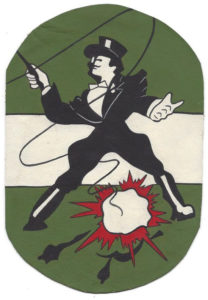
__________
This toll of men and planes represented one of the heaviest losses incurred by an Army Air Force Combat Group during the Second World War, with the worst such event – resulting in the loss of 26 Liberators – befalling the 445th Bomb Group during a mission to Kassel, Germany, on September 27, 1944. (The initial cause of the 445th’s losses of September 27 was an error in radar navigation in the 445th’s lead Liberator, B-24J 42-51541, RN * H, piloted by Captain John H. Chilton, with Major Don W. McCoy as command pilot; neither man survived.) Another such incident, perhaps less widely known, was the 483rd Bomb Group’s loss of 14 B-17s during a mission to Memmingen, Germany on July 18, 1944, which included seven B-17s of the 816th Bomb Squadron.
The commonality of these incidents was that they were situations in which the German air defense network was able to detect, recognize, and exploit the absence of American escort fighters, directing its fighters to strike the temporarily undefended American Bombardment Groups, overwhelming the bombers’ combined defensive firepower through a succession of coordinated, tightly concentrated, and close attacks by multiple aircraft.
Thus, the loss of the Ringmaster’s 15 Liberators within the space of fifteen minutes, on November 26, 1944.
As part of the 8th Air Force’s B-24-equipped 2nd Bombardment Wing, the Ringmasters were sequentially the “last” combat group (preceded by the 389th and 445th Bomb Groups) allocated to bomb the Deurag-Neurag oil refinery.
____________________
This map gives a sense of the the location of Hannover relative to other cities in northern Germany, as well as the Netherlands, Belgium, and France…

____________________
…while this map shows the locations of Hannover and Misburg Nord relative to one another.

____________________
Before the Misburg mission. (Well, long before the Misburg mission.) This photo – presumably taken by the Royal Air Force – shows the Deurag-Nerag Synthetic Oil Refinery as it appeared in 1942. The channel running parallel to the bottom of the image is the Stichkanal Misburg. For the purposes of this post, I’ve digitally “rotated” the photo (you can view the original at Fold3) such that its orientation is consistent with the refinery’s actual geography: Thus, “up”, or the “top” of your screen, is north, and “down”, or the bottom of your screen, is south.
Caption: “Synthetic plant at Misburg, Germany with monthly pre-attack capacity of 25,000 tons looked like this in 1942.” Print received January 1945 from Pub. Sec., AC/AS Intel. Used in January, 1945 issue of Impact. (Photo 55774AC – A22022 (1942)
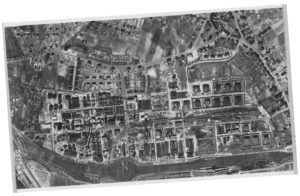
____________________
By the time the Group approached the target, the horizontal distance between the Ringmasters and the two preceding Groups had notably increased, diminishing the potential effectiveness of escort fighter coverage for all three Groups, as well as placing the 491st in a relatively isolated position relative to the remainder of the 2nd Bomb Wing as a whole.
At 1226 hours, the 491st had just turned at the I.P. (the “Initial Point”, an identifiable land mark about 20 miles more of less from a target, from which location a Group’s bomb-run would typically commence); in this case the Lower Saxon town of Wittingen, approximately 46 miles northeast of Hannover. Just prior to reaching this location, a large number of Luftwaffe fighters – approximately 150 to 200 aircraft – was seen southeast of the 491st’s formation. As stated in Ringmasters, “They [Luftwaffe fighters] made no move toward the Liberators but were “just playing around in the clouds” as if daring the Mustangs and Thunderbolts to come over and mix it up. The chance seemed too good to miss and the entire close fighter escort, consisting of 197 P-51s and 48 P-47s, went storming after the Germans, estimated at from 150 to 200 strong. In a matter of minutes they were fully engaged, leaving the B-24s on their own. Area coverage fighters, as noted above, had already been diverted to meet an earlier appearance of the enemy.”
The Group’s Air Commander (and Commanding Officer of the 854th Bomb Squadron) Lt. Col. Parmele – about whom possibly more in a future post – was immediately faced with the decision of whether to: “…uncover his three squadrons in the face of imminent enemy attack or to preserve the Group formation and meet the enemy with a united front. Realizing that superior bombing results could only be achieved by uncovering, he unhesitatingly ordered this maneuver.” The 491st thus commenced its bomb run. Then, a mishap occurred in the lead B-24 of the “low” – 854th – Bomb Squadron (Lt. Haney’s plane, #735, 6X * Z –): Within the already crowded nose of the plane, the nose gunner accidentally tripped the bomb toggle switch, which caused the B-24 to release its bombs. The rest of the 854th Bomb Squadron immediately followed suit, that entire squadron’s bomb load falling into open fields 15 miles from Misburg.
____________________
After “a” Misburg mission. (But which mission?!) Dated as having been received on October 6, 1944 from the BPR (Bureau of Public Relations?) this reconnaissance photo shows the level of destruction incurred from aerial bombardment. While damage is readily apparent across the facility, particularly among the storage tanks, it seems that other parts of the plant are still relatively intact. Also, note the degree to which bombs have impacted on nearby farmland.
Akin to the previous image, this image has been rotated to conform to geographic north. As such, the very long southwest to northeast oriented shadows, particularly those projecting from infrastructure near the Stichkanal, suggest that the image was taken very late in the afternoon. Well, an afternoon.
Caption: “HITLER’S OIL PLANT AT MISBURG HIT HARD – Gutted installations and burned out storage tanks set the stage at the German synthetic oil plant at Misburg, near Hannover, after U.S. Army 8th Air Force heavy bombers had attacked it several times in the past few months. It was last attacked on 12 September 1944.” Negative received 10/6/44 from BPR, to accompany Press Release: “HITLER’S OIL PLANT AT MISBURG (Photo +54123AC – A22017)

____________________
The image below, from Ringmasters, is captioned “The COs – Golf, Miller, Parmele”, but doesn’t specify “who” commanded “what”. While I can’t identify “Golf” and am uncertain of “Miller’s” identity (could he be Group CO Colonel Frederic H. Miller, Jr.?), “Parmele” is definitely Lt. Col. Charles C. Parmele of the the 854th. (In 2007, Edward Kamarainen, one of the six survivors of 853rd Bomb Squadron’s DORTY TREEK, wrote and published (via lulu.com) This Is War and We Are Prisoners of the Enemy, in which he states that the commander of the 853rd was Lt. Col. Harry Stephy.)
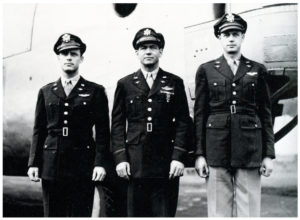 The German air defense network recognized the status and disposition of the 2nd Bomb Wing’s three trailing B-24 Groups, particularly the sudden vulnerability of the 491st. Thus, flak stopped, a prelude to attack by Luftwaffe fighters. As noted by Sal Leotta, Dead-Reckoning navigator in Lt. Haney’s crew (in a description and tone consistent with the above quote pertaining to the Group’s fighter escort), “After passing the Dummer Lake area we received many reports of enemy fighters. The mission continued until about 20 minutes before the IP when a large force of enemy fighters was sighted. Our fighter escort peeled off to intercept and stave off any attack on the bombers. I recall the subsequent air battle drifting off in the distance. Looking back later, it became obvious that this engagement was a ruse to strip us of our fighter escort.”
The German air defense network recognized the status and disposition of the 2nd Bomb Wing’s three trailing B-24 Groups, particularly the sudden vulnerability of the 491st. Thus, flak stopped, a prelude to attack by Luftwaffe fighters. As noted by Sal Leotta, Dead-Reckoning navigator in Lt. Haney’s crew (in a description and tone consistent with the above quote pertaining to the Group’s fighter escort), “After passing the Dummer Lake area we received many reports of enemy fighters. The mission continued until about 20 minutes before the IP when a large force of enemy fighters was sighted. Our fighter escort peeled off to intercept and stave off any attack on the bombers. I recall the subsequent air battle drifting off in the distance. Looking back later, it became obvious that this engagement was a ruse to strip us of our fighter escort.”
The impression arising from these accounts is that the 491st was – in effect and reality – left on its own, the escort fighters having been drawn away off in the pursuit and attack of nearby concentrations of Luftwaffe interceptors. Doubtless events could genuinely and sincerely have been perceived as such by the crews of the Ringmasters. (This comes across in Edwin Kamarainen‘s book.) However, it could be ventured that – given the sheer number of aircraft (American (732) and German) operating in a geographically limited airspace; the near-inevitable fluidity and complexity of aerial combat; the simple unpredictability inherent to any military engagement – a difference in perspective and priority vis-a-vis bomber crews and fighter pilots might well have been, and be, sadly inevitable. So… If you’re interested in more information about the 8th Air Force fighter engagements of November 26, 1944, you can find 38 combat reports for this mission (and 790 reports for other dates) at WW II Aircraft Performance.
In any event… As described in the Group’s mission report, “At 1240 hours approximately 100 E/A attacked the formation just south of Hannover. The attack was made by FW 190s in line astern formation mostly from 6 o’clock high and pressing attack to within 100 yards — Peeling off and coming in again from any angle — This attack lasted until 12:55 hrs. The squadrons were in trail when the attack started and the last squadron [853rd] was attacked first — Then the middle [854th] and finally the lead [855th] — The attack on the lead squadron was not intense and no A/C were lost from the squadron.” Again, Sal Leotta: “In what appeared to be seconds, the sky filled with enemy fighters and the high squadron (853rd BS) was literally blown out of the skies. Without a pause, we (854th BS) were the next target. They came at us about 10 to 20 abreast firing their cannons. During the attack I felt useless with no gun to fire. All I could do was to call out the positions of incoming bandits. In retrospect, I am amazed at the intensity, speed and success of the attack. It may have felt like an eternity but it actually was very swift, a matter of a few minutes. It happened so quickly that there was not time to pray or be frightened.”
In an indirect and sad way, the nature of the tactic employed by Jagdgeschwader 301 against the 491st is verified by a review of Missing Air Crew Reports for Ringmaster B-24 losses that day: These documents reveal that a slight preponderance (well, in a general sense) of aircrew casualties occurred among those airmen whose crew positions were situated in the rear of their aircraft – tail, waist, and ball turret gunners, while those situated in the front – pilots, navigators, bombardiers, and flight engineers – seem to have had a somewhat better chance of survival. Of the 16 491st B-24s that were lost, there were no survivors on three planes (Problem Child, ARK ANGEL, and Blue Circle) while in the B-24s piloted by Lieutenants Ecklund (853rd) and Lanning (854th), all crewmen but one survived the mission. In no case did a shot-down Ringmaster crew survive intact, though all crew members in two of the five 445th Bomb Group’s losses (both of the 703rd Bomb Squadron) survived the mission.
The bombers were attacked by Jagdgeschwader 301, a Luftwaffe fighter wing based at Stendal (110 miles east of Hannover), at the time equipped with FW-190A-8 and A-9 fighters. After the Wing’s three Gruppen downed 15 Ringmaster and then 5 445th B-24s (389th Bomb Group B-24J 44-10579 Pugnacious Princess Pat was shot down by flak), P-51s of the 2nd Scouting Force, followed by P-51s of the 339th, 355th, and 361st Fighter Groups, responding to radio calls, came to the defense of the Liberators, pilots of the three Fighter Groups respectively claiming 28, 21, and 23 enemy planes, these 72 aerial victories comprising FW-190s from JG 301, and, fighters from other Luftwaffe fighter wings.
____________________
Combat in real time: This image, probably captured by a B-24’s automatic downward-facing camera, has photographically “captured” an FW-190 flying over Hannover. Paralleling the two above images of the Deurag-Nerag Synthetic Oil Refinery, I’ve photoshopifically “rotated” this image such that geographic north is “up” towards the top of your screen. This orientation was determined by comparing the layout of streets and other features in the photo (the original image at Fold3 has a typical horizontal format) to Apple Map views of Hannover.
The FW-190, flying south-southeast, is situated almost exactly halfway between the two puffy clouds in the left half of the image.
Caption: “A Nazi FW-190 wings over the Misburg area as U.S. 8th Air Force heavies, high overhead drop their lethal load on the oil refinery there 26 Nov 44.” Passed for publication 22 December 1944. Negative received 12/29/44 from BPR. (Photo 55593AC – A22019)
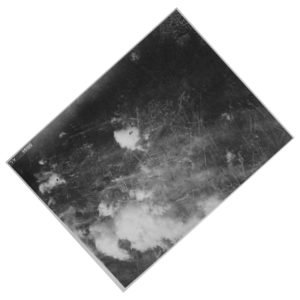
This’ll make it easier to see the FW-190: It’s a cropped view of the above photo, with the FW-190 in the very center of the image. Nothing on camouflage and markings, but hey, it’s an interesting and relevant picture.
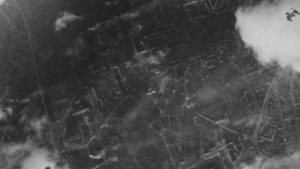
So, where exactly is – more accurately, where was – the plane in relation to Hannover? This 2021 view reveals that the plane’s location – shown by the red circle – was directly over what appears to be the Stadtfriedhof (State Cemetery) Lindener Burg…
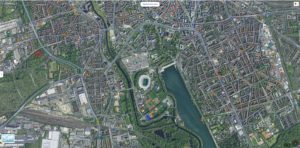
…as shown in the map below.

____________________
The diagram below, from Ringmasters, illustrates the arrangement of the 491st’s formation as if viewed from above, with each aircraft identified by the pilot’s surname, the last three digits of its serial number, and its individual squadron code letter. (Edward Kamarainen noted that one 853rd Liberator – #341 (T8 * – W) – turned back because of radio failure.) Red boxes indicate aircraft shot down, with 1 Lt. Harold E. Lanning’s plane (blue box: Reluctant Dragon, 6X * I –, probably 42-95610) surviving the attack. Mortally damaged and with one waist gunner (S/Sgt. Lee A. Taylor) dead, its nine survivors safely parachuted near Brussels. Note that the lead (855th) squadron survived the mission intact.
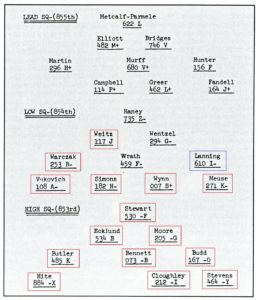
______________________________
Lieutenant Hirsch was the navigator of an aircraft ironically named THE FIREBIRD (B-24J 42-110167; a camouflaged plane with squadron code T8 * – O), piloted by 1 Lt. Daniel C. Budd. There were two survivors from the plane’s crew of ten: right waist gunner S/Sgt. Frank Verbosky and left waist gunner S/Sgt. Thaddeus C. Jarosz, for whom postwar Casualty Questionnaires are conspicuously absent from the Missing Air Crew Report (MACR 10768) covering their plane’s loss.
Perhaps there was little for them to say.
Crash location as listed Luftgaukommando Report KU 3452:
Bredenbeck near Bennigsen; 20 km northwest of Hildesheim.
 Budd, Daniel C., 1 Lt. – (0-797459), Falls Church, Va. – Pilot
Budd, Daniel C., 1 Lt. – (0-797459), Falls Church, Va. – Pilot
Oury, Noel A., 2 Lt. – (0-1998532), Richmond, Va. – Co-Pilot
Hirsch, Norman F., 1 Lt. – (0-709375), Brooklyn, N.Y. – Navigator
Walker, Floyd A., Jr., 2 Lt. – (0-2058592), Des Moines, Ia. – Navigator (Nose)
Phelps, William F., 1 Lt. – (0-706899), New London County, Ct. – Bombardier
Brock, Vernon R., T/Sgt. – (36458670), Albion, Mi. – Flight Engineer
Bemis, Elmer H., T/Sgt. – (31261913), Marlboro, Ma. – Radio Operator
Verbovsky, Frank, S/Sgt. – (32911685), North Bergen, N.J. – Gunner (Right Waist) (Survived)
Jarosz, Thaddeus C., S/Sgt. – (31362327), Laurence, Ma. – Gunner (Left Waist) (Survived)
Crane, Thomas R., S/Sgt. – (32757283), Salem, N.J. – Gunner (Tail)
As reported in the Luftgaukommando Report, the bomber crashed 20 kilometers northwest of the town of Hildehseim, at “Bradenback near Bemimgsen”. (The correct spellings should be “Bredenbeck” and “Bennigsen”.) Curiously, MACR 10768 lists aircraft as being assigned to the 853rd BS, as does “Ringmasters”, but B-24BestWeb designates plane as belonging to the 852nd BS. (Perhaps the plane was assigned to 853rd BS prior to the mission of November 26.)
__________
Here are pages from Luftgaukommando Report KU 3452. The degree of destruction of the plane is indicated by the near-complete absence of technical information about the wreckage, with the exception of one entry about radio equipment. Apparently, there was very little left.





 __________
__________
Lt. Hirsch, serial 0-709375, received the Air Medal and Purple Heart, and is buried in Section 24 of Arlington National Cemetery, in a collective burial with Lt. Budd, co-pilot 2 Lt. Noel A. Oury, flight engineer T/Sgt. Vernon R. Brock, and radio operator T/Sgt. Elmer H. Bemis. They presumably had flown all their prior missions together, as mentioned in Ringmasters by 853rd Squadron bombardier Vince Cahill: “It was a quiet hut that night. Pilots Budd and Orley, Navigator Hirsh [sic] and Bombardier “Shorty” were gone. I wondered if we would ever be lucky enough to complete our 35 missions. This was Budd’s crew’s 26th mission, four more to go for 30 and a complete tour.”
This photo of the mens’ collective grave is by FindAGrave contributor John Evans.
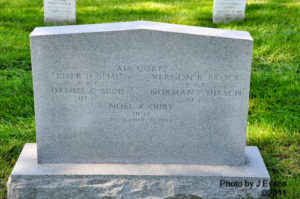 This photograph of THE FIREBIRD’s nose art is from B-24 Best Web…
This photograph of THE FIREBIRD’s nose art is from B-24 Best Web…
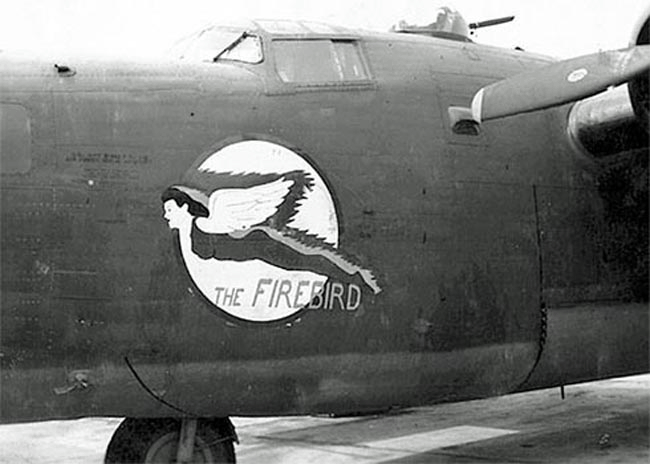 …while this image is from the 491st Bomb Group website, now available through Archive.org’s “Wayback Machine”.
…while this image is from the 491st Bomb Group website, now available through Archive.org’s “Wayback Machine”.
 …and this image, taken on May 13, 1944, is from the Flickr photostream of the San Diego Air and Space Museum.
…and this image, taken on May 13, 1944, is from the Flickr photostream of the San Diego Air and Space Museum.
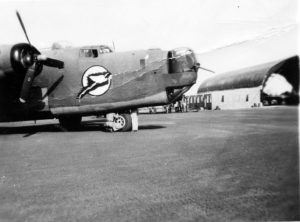
______________________________
Lt. Hirsch’s obituary, as published in The New York Times on February 24 (and in the Brooklyn Eagle on February 21, 1945), follows:
Killed While in Action In Battle of Germany
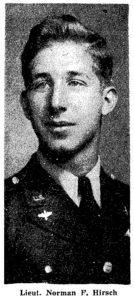 First Lieut. Norman F. Hirsch of the Army Air Forces was killed in action over Germany on Nov. 26, the War Department informed his parents, Mr. and Mrs. Reuben [and Esther] Hirsch of 416 Ocean Avenue, Brooklyn, on Jan. 26, it was announced yesterday. Twenty-three years old, Lieutenant Hirsch held the Air Medal, was a Liberator navigator with the Eighth Army Air Force in England and had flown thirty-five missions.
First Lieut. Norman F. Hirsch of the Army Air Forces was killed in action over Germany on Nov. 26, the War Department informed his parents, Mr. and Mrs. Reuben [and Esther] Hirsch of 416 Ocean Avenue, Brooklyn, on Jan. 26, it was announced yesterday. Twenty-three years old, Lieutenant Hirsch held the Air Medal, was a Liberator navigator with the Eighth Army Air Force in England and had flown thirty-five missions.
Born in Elizabeth, N.J., Lieutenant Hirsch attended Brooklyn College and City College and was a senior in the latter institution when he enlisted in 1942. He began his air training in 1943 and received his wings in 1944.
His father is a lawyer. Besides his parents, he leaves a brother, Second Lieut. William J. Hirsch of the Fifteenth Army Air Force in Italy.
The New York Times 2/24/45 (obituary), Casualty List 3/14/45
Brooklyn Eagle 2/21/45 (obituary), 5/16/46, 5/17/46, 6/6/46, 6/10/46
American Jews in World War II – 345
Here’s a contemporary view of 416 Ocean Parkway, from Jeff Reuben’s Flickr photostream.
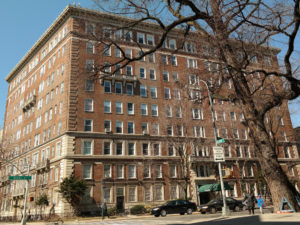 Over a year later, the Brooklyn Eagle would carry two brief news items mentioning Lt. Hirsch, both mentioning a Jewish War Veterans Post named in his honor, which met at Congregation Ahavath Israel and Talmud Torah of East Midwood, at 2818 Avenue K in Brooklyn.
Over a year later, the Brooklyn Eagle would carry two brief news items mentioning Lt. Hirsch, both mentioning a Jewish War Veterans Post named in his honor, which met at Congregation Ahavath Israel and Talmud Torah of East Midwood, at 2818 Avenue K in Brooklyn.
May 16, 1946
Three years ago a certain Brooklyn College student left behind classroom and books to enlist in the army and did not return. Tonight one of his former instructors, Prof. Louis A. Warsoff, will speak at an open meeting to be held by the Jewish War Veterans post named for the student, Norman F. Hirsch. Professor Warsoff will speak on “The World of Tomorrow” at the session of the Lt. Norman F. Hirsch Post, Congregation Ahavath Israel, 2818 Avenue K.
June 6, 1946
Annual memorial services will be held at 8:30 p.m. Sunday in Congregation Ahavath Israel, 2818 Avenue K. Participating will be members of Flatlands Post, American Legion, and Lt. Norman F. Hirsch Post, Jewish War Veterans.
This Flickr image, by Matthew X. Kiernan, is a 2012 view of the schul, now the home of Young Israel of Avenue K.
 Some other Jewish military casualties on Sunday, November 26, 1944 (10 Kislev 5705), include…
Some other Jewish military casualties on Sunday, November 26, 1944 (10 Kislev 5705), include…
Killed in Action
– .ת.נ.צ.ב.ה. –
United States Army Air Force
8th Air Force
445th Bomb Group, 701st Bomb Squadron
Bailey, Herbert Edward, 2 Lt., 0-712477, Navigator, Air Medal, Purple Heart
Mr. and Mrs. Meyer E. [7/22/97-10/10/65] and Marion T. [1902-2/12/60] Bailey (parents), Alan P. Bailey (brother), 100 Laurel Road, New Haven, 13, Ct.
Born Hartford, N.Y., 6/17/23
MACR 10754, Luftgaukommando Report KU 3366, Aircraft B-24H 42-94940 (The Green Hornet), Pilot 2 Lt. William K. Boykin, 9 crew – 3 survivors
Ardennes American Cemetery, Neupre, Belgium – Plot D, Row 24, Grave 21
American Jews in World War II – 61
Statement in MACR: “Ship #940 was jumped by fighters after bombs away and started going down. Four (4) chutes were observed. Plane was not on fire and seemed under control.”
Crash location:
In MACR: 15 miles southeast of Hannover
In Luftgaukommando Report: Sorsun, 10 km southwest of Hildesheim
 Boykin, William L., Jr., 2 Lt. – (0-772784), Philadelphia, Pa. – Pilot
Boykin, William L., Jr., 2 Lt. – (0-772784), Philadelphia, Pa. – Pilot
Tubergen, Gary V., Jr., 2 Lt. – (0-821812), Plymouth, Mi. – Co-Pilot
Bailey, Herbert E., 2 Lt. – (0-712477), New Haven, Ct. – Navigator
Price, Junius C., T/Sgt. – (34644499), Florence, S.C. – Flight Engineer (Survived)
Welch, Donald N., T/Sgt. – (35549094), Lima, Oh. – Radio Operator (Survived)
Gutowsky, Joe A., S/Sgt. – (36262079), Racine, Wi. – Gunner (Nose)
McFadden, Walter C., S/Sgt. – (33679986), Grove City, Pa. – Gunner (Waist) (Survived)
Crespolini, Americo A., S/Sgt. – (33609563), Old Forge, Pa. – Gunner (Waist)
Craig, Otis D., S/Sgt. – (32956491), Wilmington, De. – Gunner (Tail)
____________________
This is an image of Herbert Bailey before he became “Lieutenant” Bailey: It’s his graduation portrait from the Milford, Connecticut, (junior?) high school class yearbook of 1939, via Ancestry.com.
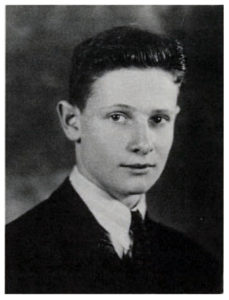
Here’s Lt. Bailey’s Officer’s Identification Card. Note that the card is designed to be twice folded, enabling it to fit inside a wallet.
While certainly hardly every Luftgaukommando Report includes this type of document, in terms of the materials that can be found in these Reports, Officer’s Identification Cards tend to be among the more common items. Note that information is limited to name, serial number, date of birth, height, weight, hair and eye color, and a set of fingerprints, and the card’s serial number – the latter not identical to the officer’s military serial number. No information is present concerning next of kin or place-of-residence.
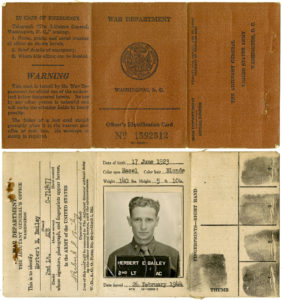
Herbert Bailey’s Army and Navy Officer’s Club (of Beverly Hills, California) dated March 25, 1944.
____________________
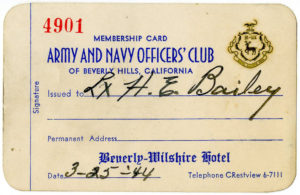
____________________
And, a newspaper clipping, undated. Crumpled and torn, but still intact.

____________________
T/Sgt. Junius C. Price was one of the three survivors of The Green Hornet. This is his Individual Issue Record of flying equipment, which appears to have been assigned to him on May 27, 1944. Some of these items are described and illustrated in Gordon Rottman’s 1993 book (published by Osprey) US Army Air Force: 1.

____________________
Sgt. Price’s Merit Award, dated May 20, 1944.

____________________
And, his Class “A” Pass from Biggs Field, Texas, dated June 30 of that year.

__________
Levy, Robert D., 2 Lt., 0-825915, Co-Pilot
Mrs. Gertrude Levy (mother), 4917 B Street, Philadelphia, Pa.
MACR 11214, Luftgaukommando Report KU 3386, Aircraft B-24J 42-50467, Pilot 1 Lt. John D. Barringer, 9 crew – no survivors
Possibly from Hamilton County, Tennessee
Nashville National Cemetery, South Madison, Tn. – Section MM, Graves 64-64A-65; Buried 4/24/50
American Jews in World War II – Not listed
Statement in MACR: “Ship #467 was jumped by fighters and two (2) chutes were seen coming out of the plane. This ship was under control at the time.”
Crash location:
In MACR: 15 miles southeast of Hannover
In Luftgaukommando Report: “Hammerswald” (probably Hämelerwald) near Peine / 6 km east of Lehrte
 Barringer, John D., Jr., 1 Lt. – (0-763904), Nashville, Tn. – Pilot
Barringer, John D., Jr., 1 Lt. – (0-763904), Nashville, Tn. – Pilot
Levy, Robert D., 2 Lt. – (0-825915), Philadelphia, Pa. – Co-Pilot
Juliano, Paul J., F/O – (T-126230), Niagara Falls, N.Y. – Navigator
Brunswig, Norman F., 2 Lt. – (0-722691), Rock Island, Il. – Bombardier
Black, Joseph F., S/Sgt. – (39414426), Fort Smith, Ar. – Flight Engineer
Sullivan, Eugene J., S/Sgt. – (11069588), North Cambridge, Ma. – Radio Operator
Lyons, Roland C., Jr., Sgt. – (33543987), Portsmouth, Va. – Gunner (Waist)
Personette, Eldon R., Sgt. – (37568985), Minneapolis, Mn. – Gunner (Waist)
Vance, William J., Jr., Sgt. – (34778642), Asheville, N.C. – Gunner (Tail)
__________
491st Bomb Group, 853rd Bomb Squadron
Negrin, Carl, Sgt., 32823090, Right Waist Gunner, Purple Heart
MACR 10762, Aircraft B-24H 41-28884 (T8 * – X / Problem Child), Pilot 2 Lt. John P. Hite, 9 crew – no survivors
Born 7/17/24, Rochester, N.Y.
Mr. and Mrs. Isaac Joseph [1895-?] and Esther [12/4/97-10/63] Negrin (parents)
Mrs. Sarah M. Lindenfeld (sister), 509 Hegeman Ave., Brooklyn, N.Y.
Mr. Michael Negrin (brother) [5/5/34-12/22/00]
Labety and Zacharia Negrin (half-brothers)
Place of Burial unknown
American Jews in World War II – 398
Aircraft crash location unknown.
Hite, John P., 2 Lt. – (0-448833), Christiansburg, Va. – Pilot
Volden, Morris J., 2 Lt. – (0-689416), Cottonwood, Mn. – Co-Pilot
O’Brien, Thomas R., 2 Lt. – (0-2062692), Maspeth, N.Y. – Navigator
Sutton, Bill H., Jr., 2 Lt. – (0-780446), Little Rock, Ak. – Bombardier
Tykarsky, Edward B., Sgt. – (13108280), West Alliquippa, Pa. – Flight Engineer
Weible, Kenneth F., Sgt. – (37356037), Chappell, Ne. – Radio Operator
Negrin, Carl, Sgt. – (32823090), Brooklyn, N.Y. – Gunner (Right Waist)
Marko, Andrew, Sgt. – (31409763), Bridgeport, Ct. – Gunner (Left Waist)
Wagers, Harold R., Sgt. – (35872381), College Corner, Oh. – Gunner (Tail)
Two in-flight views of Problem Child (images UPL 17514 and UPL 17515, respectively) from the McCool collection, via the American Air Museum in England…
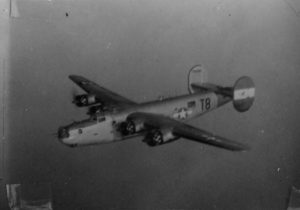

…and the nose art of Problem Child, from the FindAGrave biography of S/Sgt. Harold R. Wagers, contributed by Jap Veermeer.
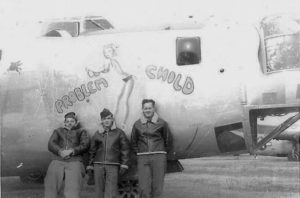
______________________________
Starr, Irving B., S/Sgt., 32995257, Nose Gunner, Air Medal, Purple Heart
MACR 10764, Luftgaukommando Report KU 3385, Aircraft B-24J 44-40073 (T8 * – B / ARK ANGEL), Pilot 1 Lt. David N. Bennett, Jr.; 9 crew – no survivors
Mrs. Dora E. Starr (mother), 54 Lott Ave., Brooklyn, 12, N.Y.
Place of Burial unknown
American Jews in World War II – 453
Statement in MACR: “Aircraft came up from High Squadron and joined Lead Squadron after attack by enemy aircraft. Martin turret was missing and there was large hole in right wing. Last seen at 1258 hrs losing altitude. No chutes were seen.”
Crash location:
In Luftgaukommando Report:
1) 3 km south of Oerrie
2) 15 km northwest of Hildesheim
Or, Between Jeinsen and Oerie, 5 km west of Sarstedt
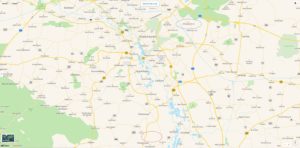
Bennett, David N., Jr., 1 Lt. – (0-686214), Norwood, N.C. – Pilot
Blount, Jessie F., 2 Lt. – (0-710548), Gainesville, Tx. – Co-Pilot
Engel, George B., 2 Lt. – (0-723332), Pittsburgh, Pa. – Navigator
Warford, Norman G., T/Sgt. – (35703424), Frankfort, Ky. – Flight Engineer
Patrick, Peter, Jr., T/Sgt. – (33741746), East Point, Ky. – Radio Operator
Starr, Irving B., S/Sgt. – (32995257), Brooklyn, N.Y. – Gunner (Nose)
Hixson, Charles E., S/Sgt. – (34505462), Cleveland, Tn. – Gunner (Right Waist)
McKee, Raymond O., S/Sgt. – (38199681), East Baton Rouge, La. – Gunner (Left Waist)
Stovall, Henry P., S/Sgt. – (35869219), Beckley, W.V. – Gunner (Tail)
____________________
Here’s Luftgaukommano Report KU 3385. It closely parallels that for THE FIREBIRD, in that virtually nothing remained of ARK ANGEL for evaluation and salvage.

____________________

____________________

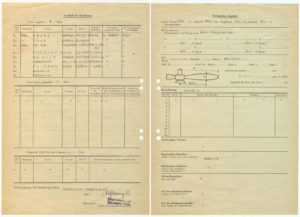
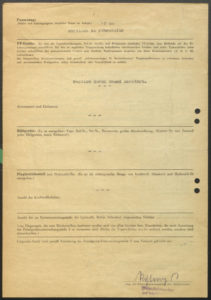
__________
1 Lt. David N. Bennett, Jr. and his crew, in an image from Ringmasters. The crewmen are unidentified, but Lt. Bennett, co-pilot Lt. Jessie Blount, navigator Lt. George Engel, and flight engineer T/Sgt. Norman Warford, are probably standing at rear. (The crew did not fly with a bombardier during the Misburg mission.) This B-24 bears nose-art inspired by an Albert Vargas pin-up from Esquire.
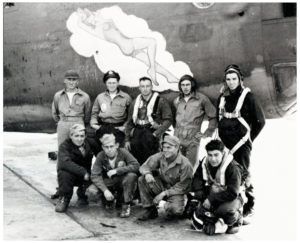 __________
__________
The Ark Angel, as depicted by artist Mark Rolfe, in Robert F. Dorr’s B-24 Liberator Units of the Eighth Air Force…

A color image of ARK ANGEL (via the American Air Museum in England) taken in the summer of 1944…
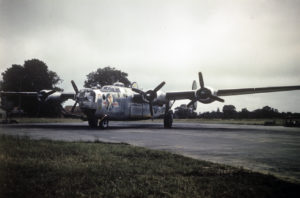 __________
__________
The nose art of ARK ANGEL, from Ringmasters…
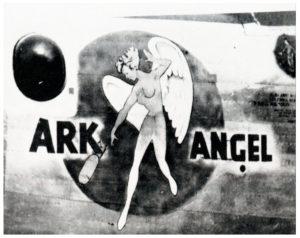 __________
__________
An in-flight view of ARK ANGEL, also from the 491st Bomb Group website, now accessible via Archive.org’s “Wayback Machine”. (On this aircraft, oddly, the 491st Bomb Group identification letter – a white “Z” within a black circle, atop the outer right wing – has been painted in reverse.)
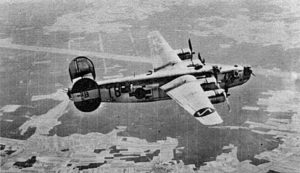 __________
__________
The story of the ARK ANGEL presents a mystery…
As is typical for MACRs covering aircraft lost in the European and Mediterranean Theatres of War (those for aircraft and airmen known to have been accounted for and identified by German investigators, which entailed the compilation of Luftgaukommando Reports), ARK ANGEL’s MACR (10764) includes the English-language translation of the above-illustrated Luftgaukommando Report (KU 3385). This includes documentation for every airman determined or believed to have been aboard the plane.
As such (see above) KU 3385 lists the names of:
Blount, Jessie F., 2 Lt.
Engel, George B., 2 Lt.
Warford, Norman G., T/Sgt.
Patrick, Peter, Jr., T/Sgt.
Starr, Irving B., S/Sgt.
McKee, Raymond O., S/Sgt.
While the names of…
Bennett, David N., Jr., 1 Lt.
Hixson, Charles E., S/Sgt.
Stovall, Henry P., S/Sgt.
…are absent.
But, one of the “Report of Capture of Member of Enemy Air Forces” forms in KU 3385 lists the name and serial number of a member of the United States Woman’s Army Corps: Her name: Ida Rosenfield, serial A-202639.
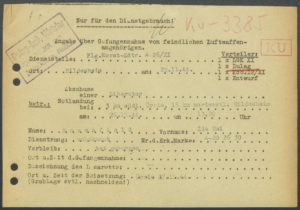
Here’s a translation of the above document, from MACR 10764.
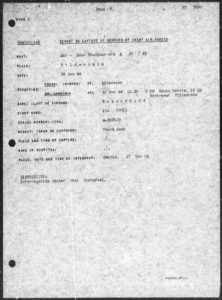 However!… A check of all relevant historical databases reveals that while an Ida Rosenfield definitely existed and served in the Army (she was born in New York in 1924, and enlisted at Caspar, Wyoming in 1943), she probably never left the continental United States to begin with.
However!… A check of all relevant historical databases reveals that while an Ida Rosenfield definitely existed and served in the Army (she was born in New York in 1924, and enlisted at Caspar, Wyoming in 1943), she probably never left the continental United States to begin with.
According to records at Ancestry.com, she seems (?) to have been the daughter of Fred and Elizabeth (Di Pillo) Rosenfield (and sister of Estelle, Leon, Nathaniel, Pearl, and Theresa), who owned a store at 2875 Butler Ave., in the Bronx.
Who was Ida Rosenfield? How did German investigators discover her name? Was she the girlfriend or fiancée of a member of ARK ANGEL’s crew – perhaps S/Sgt. Starr, as he was from Brooklyn? Might he have carried her dog-tag as a sign of friendship, affection, or much more? I don’t know. The answer has assuredly been lost to time.
______________________________
Steinman, Elmer, S/Sgt., 32775794, Tail Gunner, Air Medal, 3 Oak Leaf Clusters, Purple Heart, 32 missions
MACR 10763, Luftgaukommando Report KU 3390, Aircraft B-24H 41-29464 (The Unlimited), Pilot 1 Lt. Charles W. Stevens, 9 crew – 5 survivors
Born 6/7/22, Bayonne, N.J.
Mr. and Mrs. Abraham / Abram (Yudel) [8/8/86-11/8/62] and Anna / “Annie” (Kronitz) [11/18/86-2/28/79] Steinman (parents), 18 Linden Ave., Bayonne, N.J.
Edith and Meyer (brother and sister)
Mount Moriah Cemetery, Fairview, N.J. – Section D03, Section D; Buried 5/29/49
American Jews in World War II – 256
Crash location in Luftgaukommando Report:
1) Hannover / near Huepede
2) 3 km southwest of Pattensen

Stevens, Charles W., Jr., 1 Lt. – (0-811461), Charlotte, N.C. – Pilot (Survived)
Thornburg, Brice E., 1 Lt. – (0-813609), Davidson, N.C. – Co-Pilot (Survived)
McCarty, David W., 1 Lt. – (0-702065), New York, N.Y. – Navigator (Survived)
Boyer, Joseph L., T/Sgt. – (37261239), Mullen, Ne. – Flight Engineer
Dechaine, Joseph P., T/Sgt. – (31215932), Waterville, Me. – Radio Operator (Survived)
Ryan, Troy L., S/Sgt. – (34622806), Balwyn, Ms. – Gunner (Nose)
Shepherd, Elmore W., S/Sgt. – (32755264), Virgilina, Va. – Gunner (Right Waist)
McJimsey, John D., Jr., S/Sgt. – (38387667), Bethany, La. – Gunner (Left Waist) (Survived)
Steinman, Elmer, S/Sgt. – (32775794), Bayonne, N.J. – Gunner (Tail)
Infantry
Brodsky, Milton, Cpl., 32707024, Bronze Star Medal, Purple Heart
United States Army, 821st Tank Destroyer Battalion, B Company
Born 1916
Mrs. Norma Brodsky (wife), 495 Vermont St., Brooklyn, N.Y.
Netherlands American Cemetery, Margraten, Holland – Plot C, Row 6, Grave 12
Casualty List 4/3/45
American Jews in World War II – 284
____________________
Feldblum, Charles V., Pvt., 31373724, Purple Heart (Germany)
United States Army, 104th Infantry Division, 414th Infantry Regiment, C Company
Born April 14, 1925
Mr. Harry J. Feldblum (father), #9 Pleasant St., Hillsboro, N.H.
Beth Jacob Cemetery, Concord, N.H.
American Jews in World War II – 224
A photo by FindAGrave contributor bhd, of Pvt. Goldblum’s matzeva, at Beth Jacob Cemetery…

____________________
Gollender, Warren, Pvt., 19132367, Purple Heart (Germany)
United States Army
Mr. and Mrs. Albert and Rae Gollender (parents), Morton (brother), 63-109 Saunders St., Forest Hills, N.Y.
Mount Ararat Cemetery, Farmingdale, N.Y. – Section 25, Range I, Lot 22 (?); Buried 11/23/47
Casualty List 2/17/45
The New York Times (Obituary Section) 11/22/47
American Jews in World War II – 329
Greenblatt, Morris, PFC, 39715208, Purple Heart
United States Army, 35th Infantry Division, 134th Infantry Regiment
Born August 29, 1925
Mrs. Annie Greenblatt (mother), 1467 Canfield Ave., Los Angeles, Ca.
Beth Olam Cemetery of Hollywood, Hollywood Memorial Park Cemetery, Los Angeles, Ca. – Section 14, Row J, Grave 41
Casualty List 2/14/45
American Jews in World War II – 45
Lewis, Leonard Sidney, PFC, 35927001, Purple Heart (France)
United States Army
Born 1919
Mr. and Mrs. Hyman and Sarah Lewis (parents), 290 Parkwood Drive, NE, Cleveland, Oh.
Martin, Sam, Mrs. Lillian L. Jacober, Mrs. Dorothy Rothman, Mrs. Adele Bass, and Mrs. Shirley Friedlander (brothers and sisters)
Mount Olive Cemetery, Cleveland, Oh.
Cleveland Press & Plain Dealer, 1/7/45, 1/8/45, 9/10/48
American Jews in World War II – 493
Merrill, Edwin J., T/4, 35608805, Radio Operator, Purple Heart
United States Army
DNB (“…as a result of injuries incurred in a vehicle accident.”)
Born April 11, 1924
Mr. Ralph Merrill (father), 1368 W. 64th St., Cleveland, Oh.
Arlington National Cemetery, Arlington, Va. – Section 12, Grave 5906
Cleveland Press 1/12/45
American Jews in World War II – 495
______________________________
Sadowsky, Louis M. (Ari bar Moshe Yakov), Pvt., 33847832, Purple Heart (Germany)
United States Army, 5th Armored Division, 47th Armored Infantry Battalion
Born 6/20/14
Mrs. Marian Sadowsky (wife), 249 Atwood St., Pittsburgh, Pa.
Beth Abraham Cemetery, Pittsburgh, Pa.; Matzeva unveiled 9/18/49
Casualty List 3/11/45
Jewish Criterion 9/7/45
American Jewish Outlook 9/9/49, 9/16/49
American Jews in World War II – 548
A photo by FindAGrave contributor Bill Bodkin, of Pvt. Sadowsky’s matzeva, at Beth Abraham Cemetery…
 ______________________________
______________________________
Weiler, Arthur, 1 Lt., 0-1054299, Purple Heart
United States Army, 1st Infantry Division, 18th Infantry Regiment
Mrs. Caroline H. Weiler (wife), 1506 West 4th St., Wilmington, De.
Henri-Chapelle American Cemetery, Henri-Chapelle, Belgium – Plot H, Row 6, Grave 49
Jewish Criterion 2/14/45
American Jews in World War II – 74
______________________________
England
Sonenthal, Alfred, WO, 1814140, Wireless Operator
England, Royal Air Force Volunteer Reserve, No. 131 Operational Training Unit
Aircraft: Catalina IVA (PBY-5A) JX252, Pilot Sgt. John Rew, 9 crew – no survivors
As described at Bureau of Aircraft Accidents Archives, “The crew was scheduled to land on the Lough Erne but due to a visibility reduced by foggy conditions, he misjudged Lake Navar with the Lough Erne. On approach, the seaplane hit a mountain and disintegrated. All nine crew members were killed.” (Data from BAAA.)
Crashed near Ely Lodge, County Fermanagh, Northern Ireland (For additional information, see JoeLoughlin.com)
Crew: (All Royal Air Force)
Sgt. John Rew
F/Sgt. Noel George Edward Ladbrook
Sgt. Bernard Alfred Rosentreter
Sgt. Alfred Sonenthal
W/O Reginald William Shallis
Sgt. David Henry Pidgeon
Sgt. Kenneth Percy West
Sgt. Edmond Thomas Crow
Sgt. James Pringle
Mrs. H. Sonenthal (mother), 37 Garden Road, Dunstable, Beds., England
Enfield (Adath Yisroel) Cemetery, Middlesex, England – Section D, Row 1, Grave 30
The Jewish Chronicle 12/1/44
We Will Remember Them – A Record of the Jews Who Died in the Armed Forces of the Crown 1939 – 1945 – 228
In 2006, a memorial for the crew was visited by Joyce Hotson, fiancée of W/O Shallis, as reported in The Mirror (London). “CLOSURE: 62 YEARS LATER; EXCLUSIVE Joyce finally gets to grieve WWII airman who crashed on Ulster” (May 31, 2006)
A photo by FindAGrave contributor DerealJolo, of W/O Sonenthal’s matzeva, at Enfield Cemetery…
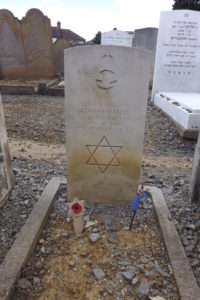
______________________________
France
Hertz, Andre (AC-21P-48961) (France, Haut-Rhin, Riesen)
France, Armée de Terre, 152eme Regiment d’Infanterie
Born 1/19/12
Benfeld, Bas-Rhin, France
Mochet, Marcel Louis, Soldat (AC 21 P 93870), Croix de Guerre (France, Territoire de Belfort, Bretagne / Montreaux-Chateau)
France, 21eme Regiment d’Infanterie Coloniale
Born France, Haute-Marne, Charmoy; 6/8/21
“On November 26, 1944, during a reconnaissance patrol on Montreux-Chateau, he was the first to search for a passage. He crossed a region flooded with water up to his belt. _____ on the opposite bank, where the enemy was not revealed, he went with a comrade to the first houses of the locality. He fell gloriously, avoiding by his sacrifice that his group would be caught in an ambush.”
[Le 26 novembre 1944, lors d’une patrouille de reconnaissance sur Montreux-Chateau, s’est mis le premier à l’eau pour rechercher un passage. A traversé une région inondée avec de l’eau jusqu’à la ceinture. Parve-un sur la rive opposée où l’ennemi ne se dévoilait pas, s’est porté avec un camarade aux premières maisons de la localité. Est tombé glorieusement, évitant par son sacrifice que son groupe ne soit pris dans une embuscade.]
Livre d’Or et de Sang – Les Juifs au Combat: Citations 1939-1945 de Bir-Hakeim au Rhin et Danube – 169
Information also at Memorial Gen Web
Mosseri, Nessim Lionel (AC 21 P 102408) (France, Haut-Rhin, Masevaux)
France , 1ere Groupe de C.D.O.S Legers de France
Born Sannen, Switzerland, 8/31/21
Slomsky, Armand, Second-Maitre, CC8 62 K 12505, Char (Fusilier), Croix de Guerre
France, Régiment Blindé de Fusiliers Marins
Born Moselle, France, 11/15/14
“Disappeared after having commanded his tank; burnt by the enemy’s fire to the last extremity.”
[Disparu aprés avoir commandé jusqu’à la derniére extrémité son char mis en flammes par le feu d l’ennemi.]
Livre d’Or et de Sang – Les Juifs au Combat: Citations 1939-1945 de Bir-Hakeim au Rhin et Danube – 169
Information also at Memorial Gen Web, and, 2ème Division Blindée de Leclerc
______________________________
Soviet Union
Red Army
РККА (Рабоче-крестьянская Красная армия)
Amelkin, Ilya Samoylovich – Lieutenant [Амелькин, Илья Самойлович – Лейтенант]
Infantry (Company Commander)
337th Rifle Division, 1127th Rifle Regiment
Died of wounds
Born 1919, in Saint Petersburg (Leningrad)
Mr. Solomon Mikhaylovich Amelkin (father)
Buried Arad, Rumania
Abramovich, Pavel Fedorovich – Guards Senior Lieutenant [Абрамович, Павел Федорович – Гвардии Старший Лейтенант]
Infantry (Rifle Company Commander)
Lightly wounded in action 6/14/42 (Southern Front, 353rd Rifle Division, 1145th Rifle Regiment)
Killed in action 11/26/44 (4th Guards Army, 41st Guards Rifle Division, 124th Guards Rifle Regiment)
Born 1921, in Dnepopetrovsk
Mrs. Mariya Moiseevna Abramovich (wife)
Buried Lanchok, Hungary
Dumay, Isay Borisovich – Junior Lieutenant [Думай, Исай Борисович – Младший Лейтенант]
Infantry (Mortar Platoon Commander)
113th Rifle Division, 1290th Rifle Regiment, Headquarters
Died of wounds
Born 1925, in Pervomansk, Odessa Oblast
Mrs. Esfir Izrailovna Dumay (wife)
Buried in Yugoslavia (Osevskaya region, Batinsky district)
Grishpun, Shaul Moiseevich – Guards Senior Lieutenant [Гришпун, Шаул Моисеевич – Гвардии Старший Лейтенант]
Infantry (Rifle Platoon Commander)
Wounded 8/25/41 (Southern Front)
Killed in action 11/26/44 (3rd Ukrainian Front, 20th Guards Rifle Division, 6th Autonomous Army Penal Company)
Born 1907, in Mogilev-Podolsk
Mrs. Anna Adolfovna Grinshpun (wife)
Buried in Hungary
Menster, Matvey Efimovich – Guards Lieutenant [Менстер, Матвей Ефимович – Гвардии Лейтенант]
Infantry (Platoon Commander)
228th Rifle Division, 767th Rifle Regiment
Died of wounds at Evacuation Hospital 3332
Born 1918
Mrs. P.P. Menster (wife)
Buried Lithuania (Kaunas district, Upper Shantsy, military cemetery, Grave No. 24A)
Morchik, Ruvik Davidovich – Senior Lieutenant [Морчик, Рувик Давыдович – Старший Лейтенант]
Infantry (Platoon Commander)
43rd Engineer-Sapper Brigade
Killed in action / Died of wounds
Born 1915, in Moscow
Relative – Ekaterina Mikhaylovna Derevyankina
Buried Hungary
Military Air Forces
VVS [Военно-воздушные cилы России – ВВС]
Kleyman (Клейман), Mordko Volfovich (Мордко Вольфович), Technician-Lieutenant [Техник-Лейтенант]
13th Air Army, 203rd Autonomous Corrective Reconnaissance Aviation Regiment [203 ОКРАП [Отдельный Корректировочно-Разведывательный Авиационный Полк]]
Two other crewmen – also killed – were…
Pilot: Lieutenant Vasiliy Pavlovich Kuznetsov (Лейтенант Василий Павлович Кузнецов)
Pilot-Observer: Junior Lieutenant Viktor Vasilevich Sovenko (Младшии Лейтенант Виктор Васильевич Совенко)
Aircraft lost (in accident?) in vicinity of Kirimäe, Estonia
Year and Place of Birth: 1920; city of Odessa
Mr. Volf Mordko Kleyman (father), Vostochnaya Street, city of Samarkand, Uzbekistan
Place of Burial: Estonia
This document is a “List of Irrecoverable Losses” for the 13th Air Army, dated 10 December 1944. Mordko Kleyman’s crew are listed as #4 (Kuznetsov), #5 (Kleyman), and #6 (Sovenko)…
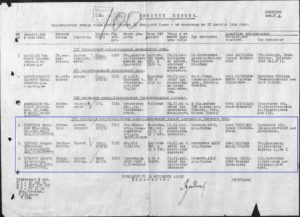
Prisoners of War
United States Army Air Force
Aschendorf, Irving, F/O, T-127406, Navigator, Air Medal, 1 Oak Leaf Cluster, 12 missions
United States Army Air Force, 8th Air Force, 390th Bomb Group, 568th Bomb Squadron
MACR 11209, Luftgaukommando Reports KU 1160A and KU 3474, Aircraft B-17G 44-6491 (BI * Y / I’ll Be Around), Pilot 2 Lt. Gilbert A. Meyer, 10 crew – all survived
Prisoner of war at Stalag Luft I (Barth, Germany), North Compound 3
Mrs. Joan E. Aschendorf (wife), 1916 Robinson Ave. (or) 1818 Kendall St., Apt. E, Portsmouth, Oh.
Mrs. Francis (Marder) Aschendorf (mother), 1938 Green St., Philadelphia, Pa.
Casualty List (Liberated POW) 6/11/45
The Story of the 390th Bombardment Group (H) – 448
American Jews in World War II – Not listed
Some years ago, Mr. Aschendorf kindly shared with me memories of his experiences as a navigator and prisoner of war, as well as documents and photographs. Some of the latter are shown below…
 Irving Aschendorf’s crew, during training in the United States. The plane is probably B-17G 42-102462, a Flying Fortress assigned throughout the war to various Army Air Force Base Units, which never left the continental United States and finally passed on to Walnut Ridge, Arkansas, in December of 1945.
Irving Aschendorf’s crew, during training in the United States. The plane is probably B-17G 42-102462, a Flying Fortress assigned throughout the war to various Army Air Force Base Units, which never left the continental United States and finally passed on to Walnut Ridge, Arkansas, in December of 1945.
Unfortunately, the image does not carry any names (albeit Irving is designated by the “x”), but the men, based on the crew list in MACR 11209 (the plane was lost with a crew of 9, as opposed to the ten men in the photo!), probably were:
Front (L-R)
2 Lt. Gilbert A. Meyer, Pilot
2 Lt. Alfred W. Burkhart, Co-Pilot
2 Lt. Dan W. Finlayson, Bombardier
Rear (L-R)
S/Sgt. Dale T. Westell, Radio Operator
S/Sgt. John L. Bartram, Flight Engineer
Sgt. Raymond W. Maul, Gunner (Ball Turret)
Sgt. Richard W. Kuerten, Gunner (Tail)
Sgt. Aaron E. Mickelson, Gunner (Waist)
__________
Irving. The chalked “6364” might represent a crew number.

__________
From KU 3474, here’s the document’s header sheet, listing seven of I’ll be Around’s ten crew members.
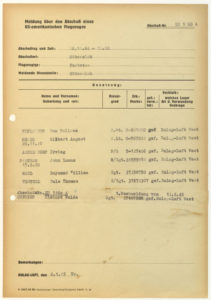
Here’s the English-language translation of KU 3474’s “Report on Captured Aircraft”, covering equipment in I’ll Be Around. While the data in this report is typical of technical information about American aircraft appearing in Luftgaukommando Reports, some Luftgaukommando Reports are very perfunctory in this regard, while others are vastly more detailed.
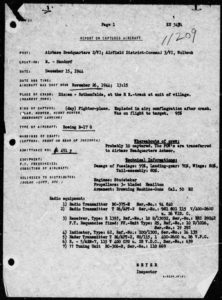
__________
This is the English-language translation of the Luftgaukommando Report (KU 1160A) listing Irving’s possessions at the time of his capture. Note that the information stamped on Irving’s dog-tag (serial number, and symbols for blood-type and religion) has also been recorded.

Here’s the original document, with Irving’s dog-tag still attached.
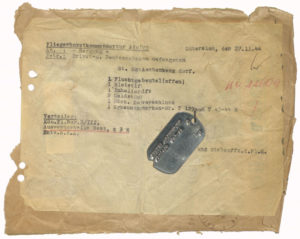
__________
Irving’s German Prisoner of War Kriegsgefangenenkartel – Prisoner of War [information] card. Though the card has numerous data entry fields, information in this example is relatively limited. Significantly, however, it includes two images of Irving (front and profile) taken shortly after his capture – with his German POW number (“6375”) – and thumbprint.
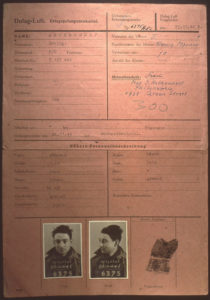 __________
__________
A front photo…
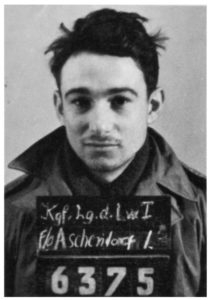
__________
…and an (almost) side photo. It looks as if Irving has a half-smile: Humor? Defiance? Irony?

__________
Kuptsow, Aaron, 2 Lt., 0-710276, Radar Navigator, Air Medal
United States Army Air Force, 8th Air Force, 398th Bomb Group, 600th Bomb Squadron
MACR 11146, Luftgaukommando Report KU 3375, Aircraft B-17G 42-97740 (“N8 * Q”), Pilot Capt. Gene L. Douglas, 10 crew – all survived
Solitary confinement at Oberursel between 11/28 and 12/24/44. “To this day [2000], I don’t know if the length of my stay in solitary was because he [interrogator] really wanted that information [about frequency of H2X radar navigation system] or if it was because I was Jewish.”
POW at Stalag Luft I, Barth, Germany
Born 1922
Mrs. Anita L. Kuptsow (wife)
Mr. David Kuptsow (father), 3000 S. Sydenham St., Philadelphia, Pa.
Jewish Exponent 3/23/45
Philadelphia Record 3/9/45
Philadelphia Inquirer and Philadelphia Record 3/12/45, 6/1/45
American Jews in World War II – 534
____________________
Here the crew list in the header sheet for Luftgaukommando Report KU 3375.

____________________
And, something odd. A map of Lager Nürnberg Buchenbühl [Nuremberg Buchenbühl Camp] (prison camp?), which somehow became part of KU 3375. Buildings outlined in dark blue are correlated to the map key “geschäftszimmer” – translating as “business room”. How, and why, this map was incorporated into KU 3375 (it certainly wasn’t carried aboard N8 * Q!) is a matter of conjecture.
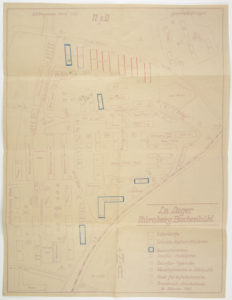
____________________
But, though the following paper may be surprising, there is no surprise as to why it’s found in KU 3385: This paper, text almost entirely in Yiddish, is a protective amulet or talisman which was carried by Lt. Kuptsow … perhaps on all his missions?
The “rear” of the paper (the “bottom” sheet, below) bears Aaron’s Hebrew name: אהרן בן דוד בן יהודת, which phonetically is pronounced “Aharon ben Dovid ben Yehúdes”, translating as “Aaron, son of David [his father] son of Yehuda“, Yehuda having been Aaron’s grandfather.
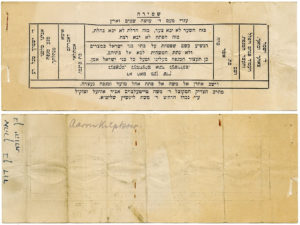
As to the front of the paper (the “top” sheet, above) which bears text arranged in boxes? An explanation follows, care of scholar and translator Avi Gold:
The contents are described in the following manner:
1. Above the large rectangle
2. Under the large rectangle
3. Three compartments on the right (a, b, c) with vertical writing
4. Three compartments on the left (a, b, c), also with vertical writing.
5. Three middle compartments (a, b, c) (with horizontal writing)
6. The one remaining thin compartment on the bottom with horizontal writing)
Hebrew Transcription
1. שמירה ; עזרי מעם ד’ עושה שמים וארץ
2. מהרב הצדיק המקובל ר’ משה טייטלבוים אב”ד אוהעל זצוק”ל ע”י נכדו הרה”צ ר’ משה ליפשיץ שליט”א
3a. ד’ ישמר צאתך ובואך
3b. ויעמד פנחס ויפלל ותעצר המגיפה
3c. ושם בת אשר שרח
4a. ד’ ישמרך מכל רע
4b. אבינו מלכנו מנע מגפה מנחלתך
4c. אימא דאברהם אמתלאי בת כרנבו
5a. בזה השער לא יבא צער, בזה הדלת לא יבא בהלת, בזה הפתח לא יבא רצח
5b. רבש”ע כשם שפסחת על בתי בני ישראל במצרים ולא נתת המשחית לבא אל בתיהם, כן תעצור המגפה מעלינו ומעל כל בני ישראל אמן.
5c. דא האט מען שוין געפאקט, געמוזעלט און געשרלכט
6. וישב אהרן אל משה אל פתח אהל מועד ומגפה נעצרה
English Translation
1. Protection (underlined); [under that word] My help is from God, Creator of Heaven and Earth
2. From the Righteous Mystical Rabbi, Rabbi Moshe Teitelboim, [otherwise known as the Yismach Moshe] Chief Judge of the Rabbinical Court of the town of Oyhel by his grandson, the Righteous Rabbi, Rabbi Moshe Lifshitz, Shlita [abbreviation meaning “May he live a long and good life, Amen”] [Thus, the talisman was presumably transcribed from a talisman authored by Rabbi Teitelboim, the original talisman dating to some time within the late 18th and early 19th centuries.]
3a. May God protect your going out and your coming in
3b. And Phineas stood and prayed, and the plague stopped [a verse from Psalms which refers to an event in the Torah, in the Book of Numbers, where Phineas is credited with stopping a plague which afflicted the Israelites in the desert]
3c. And the name of the daughter of Asher was Serah [Serah, the daughter of Asher, appears in some midrashim as the female parallel to Elijah, and according to midrashic tradition she lived a very long life indeed: She was a young girl when Jacob and his family went down to Egypt, and she was an elderly woman when the Exodus took place centuries later! Several midrashim say that she was the one who helped Moses find the tomb of Joseph, because she remembered where his sarcophagus had been placed centuries earlier!]
4a. May God protect you from all evil
4b. O our Father, O our King, prevent plague from afflicting Your Land
4c. The mother of Abraham, Amtelai, daughter of Karnevo
5a. Through this gate, no sorrow will enter, through this door no terror will enter, through this entrance no murder will come. [In Hebrew, the three lines are meant to rhyme.]
5b. Master of the Universe, just as You protected the homes of the Israelites in Egypt and did not allow the destroyer to enter their homes, so too may the plague cease to afflict us and all of Bne Yisrael, Amen!
5c. Here one had already caught / packed (This is Yiddish, rather than Hebrew)
6. And Aaron returned to Moses to the entrance of the Tent of Meeting, and (the) plague ceased
According to Avi, “Interestingly enough, this protective amulet/talisman speaks of protection against a plague, and causing the plague to cease, and it even has a Pesach connection.”
Avi’s final comment, from early 2021:
May we all see better days soon, and may the plague of authoritarian politicians as well as the plague of the Chinese virus both cease soon!
P.S. Thanks very much, Avi!
____________________
The experiences of Aaron Kuptsow – who was among the Jewish POWs segregated at Stalag Luft I in early 1945 – are recounted in detail at:
Stalag Luft I (“World War II – Prisoners of War – Stalag Luft I ) – A collection of stories, photos, art and information on Stalag Luft I”) incldues Aaron’s story, in his own words.
You can read Robert W. Martin’s interview of Aaron Kuptsow at the website of Clyde D. Willis, radio operator / gunner in the 451st Bomb Squadron, 322nd Bomb Group, 9th Air Force. (Clyde Willis was shot down and captured during the disastrous mission of the 450th and 452nd Bomb Squadrons to Ijmuiden, Holland, on May 17, 1943; he was one of the 26 survivors of that mission.)
It’s interesting none of these accounts make mention of the presence of this document, particularly in light speculation about the motivation for his month-long solitary confinement before being released to Stalag Luft I.
The Library of Congress Veterans History project’s biographical profile of Aaron Kuptsow includes a half-hour duration audio interview.
Men who were Aaron’s barrack-mates after the segregation of the Jewish POWs at Stalag Luft I were:
Bauman, Mort (2 Lt. Morton Bauman, Bombardier; 506th Bomb Squadron, 44th Bomb Group, 8th Air Force)
Edgar, Richard (2 Lt. Richard Edgar, Navigator; 861st Bomb Squadron, 493rd Bomb Group, 8th Air Force)
Davis, “Bwana” (2 Lt. David Davis, Navigator; 725th Bomb Squadron, 451st Bomb Group, 15th Air Force)
Eskenazi, “Esky” (1 Lt. Jack Eskenazi, Bombardier; 553rd Bomb Squadron, 386th Bomb Group, 9th Air Force)
Finklestein, “Fink” (1 Lt. Frederick G. Finkelstein, Co-Pilot; 331st Bomb Squadron, 94th Bomb Group, 8th Air Force)
Galfunt, “Hap” (2 Lt. Abraham Galfunt, Co-Pilot; 861st Bomb Squadron, 493rd Bomb Group, 8th Air Force)
Kattef, Max (2 Lt. Maxwell Samuel Kateff, Navigator; 863rd Bomb Squadron, 493rd Bomb Group, 8th Air Force)
Labowitz, Jack (2 Lt. Jack Oscar Labovitz, Pilot; 743rd Bomb Squadron, 455th Bomb Group, 15th Air Force)
Oppenheimer, “Oppy” (2 Lt. Alfred Martin Oppenheimer, Bombardier; 578th Bomb Squadron, 392nd Bomb Group, 8th Air Force)
Rubin, Melvin (2 Lt. Melvin Rubin, Co-Pilot; 824th Bomb Squadron, 485th Bomb Group, 15th Air Force)
Safer, Henry (1 Lt. Henry Safer, Bombardier; 429th Bomb Squadron, 2nd Bomb Group, 15th Air Force)
Scheer, Harold (2 Lt. Harold Scheer, Navigator; 359th Bomb Squadron, 303rd Bomb Group, 8th Air Force)
Stovroff, “Russian” (2 Lt. Irwin Joseph Stovroff, Bombardier; 506th Bomb Squadron, 44th Bomb Group, 8th Air Force)
______________________________
8th Air Force, 491st Bomb Group, 853rd Bomb Squadron
Pollak, Harry Hamilton, T/Sgt., 12093803, Radio Operator, Air Medal, 5 Oak Leaf Clusters
MACR 10767, Luftgaukommando Report KU 3368, Aircraft B-24J 42-51530 (Idiot’s Delight), Pilot Capt. Wayne E. Stewart, 10 crew – 5 survivors
Crashed at Annaturm-Deister, 5 kilometers north of Springe
Prisoner of War at Stalag Luft IV (Gross-Tychow, Germany)
Born New York, March 21, 1921;
Mr. Sigmond Pollak (father), 278 Ackerman Ave., Clifton, N.J.
Casualty List (Liberated POW) 6/7/45
Harry Pollak, who served in the States Department as an authority on international labor affairs, died on September, 27, 1980. His obituary can be found at the Washington Post.
American Jews in World War II – 249
Crash location in Luftgaukommando Report:
1) Annaturm
2) Deister, 5 km north of Springe
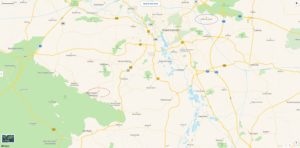
Stewart, Wayne E., Capt. – (0-811152), Meadow, Ut. – Pilot
Spady, Frank A., Jr., 1 Lt. – (0-815007), Chuckatuck, Va. – Co-Pilot (Survived)
Johnson, Woodrow G., 1 Lt. – (0-702443), Iron River, Mi. – Navigator
Reese, William L., 1 Lt. – (0-703016), Garfield Heights, Oh. – Navigator (Nose)
Valachovic, George A., 1 Lt. – (0-886529), Johnstown, N.Y. – Bombardier (Survived)
Anderson, Laverne G., T/Sgt. – (17154654), Littlefield, Ma. – Flight Engineer
Pollack, Harry H., T/Sgt. – (12093803), Clifton, N.J. – Radio Operator (Survived)
Corona, George H., S/Sgt. – (39122650), San Francisco, Ca. – Gunner (Right Waist)
Mosley, Henry K., Jr., S/Sgt. – (15140725), Arcade, N.Y. – Gunner (Left Waist) (Survived)
Reichenau, Walter W., S/Sgt. – (38366475), Fredericksburg, Tx. – Gunner (Tail) (Survived)
____________________
Rosenfield, Samuel Stanley, S/Sgt., 12075010, Right Waist Gunner, Distinguished Flying Cross, Air Medal, 4 Oak Leaf Clusters, Purple Heart
MACR 10761, Luftgaukommando Report KU 3362, Aircraft B-24J 44-10534, Pilot 1 Lt. Charles J. Ecklund, 9 crew – 8 survivors
Crashed at Rieste, District of Bersenbrueck
Prisoner of War at Stalag Luft IV (Gross-Tychow, Germany) and Stalag Luft I (Barth, Germany) (North Compound 3)
Mr. Frank M. Rosenfield (father), 2067 Mapes Ave., Bronx, N.Y.
Casualty List (Liberated POW) 6/6/45
American Jews in World War II – 419
Crash location in Luftgaukommando Report: Rieste, County of Bersenbrueck

Ecklund, Charles J., 1 Lt. – (0-772320), Harveyville, Ks. – Pilot (Survived)
Strohl, Marvin E., 2 Lt. – (0-720957), Detroit, Mi. – Co-Pilot (Survived)
Vosiepka, George K., 2 Lt. – (0-2056649), Omaha, Ne. – Navigator (Survived)
Simms, Horace R., Jr., 2 Lt. – (0-773343), Oakland, Ca. – Bombardier (Survived)
Guerry, Edward C., T/Sgt. – (39281104), Imperial, Ca. – Flight Engineer (Survived)
Heib, John N., T/Sgt. – (39203497), Seattle, Wa. – Radio Operator
Rosenfield, Samuel S., S/Sgt. – (12075010), New York, N.Y. – Gunner (Right Waist) (Survived)
Johns, Burton A., S/Sgt. – (39290817), Los Angeles, Ca. – Gunner (Left Waist) (Survived)
Cole, Dennis C., S/Sgt. – (16115245), Westby, Wi. – Gunner (Tail) (Survived)
____________________
445th Bomb Group, 703rd Bomb Squadron
Spiegel, Harvey, 2 Lt., 0-834053, Co-Pilot
MACR 11217, Luftgaukommando Report KU 3387, Aircraft B-24J 42-50756 (RN * J), Pilot 2 Lt. Dance W. Snow, 9 crew – all survived
Crashed at Fischbeck / Weser (1 kilometer north of Fischbeck, 6 kilometers northwest of Rinteln)
Prisoner of war at Stalag Luft I (Barth, Germany), North Compound 3
Born April 7, 1924
Mrs. Janice Spiegel (wife), 1739 Dahill Road, Brooklyn, N.Y.
Casualty List (Liberated POW) 6/20/45
American Jews in World War II – Not listed
Statement in MACR: “No information has been received about ship # 756. The four (4) ships flying nearby all failed to return.”
Crash location:
In MACR: 15 miles southeast of Hannover
In Luftgaukommando Report: Fischbeck, 6 km northwest of Rinteln

Snow, Dance W., 2 Lt. – (0-690264), Silver City, N.M. – Pilot (Survived)
Spiegel, Harvey, 2 Lt. – (0-834053), Brooklyn, N.Y. – Co-Pilot (Survived)
Hudson, Robert F., 2 Lt. – (0-2056798), Rochester, N.Y. – Bombardier / Navigator (Survived)
Barbieri, Joseph W., Jr., T/Sgt. – (32781916), Jamaica, N.Y. – Flight Engineer (Survived)
McKim, Ernest M., T/Sgt. – (32905189), Glen Cove, N.Y. – Radio Operator (Survived)
Valore, Biaggio F., Sgt. – (35924434), Cleveland, Oh. – Gunner (Nose) (Survived)
Maronski, Stanley J., Sgt. – (42029120), Angola, N.Y. – Gunner (Waist) (Survived)
Rogers, J.B., S/Sgt. – (38346476), Wheeler, Tx. – Gunner (Waist) (Survived)
Jordan, Robert, Sgt. – (42101534), Upper Montclair, N.J. – Gunner (Tail) (Survived)
From Luftgaukommando Report KU 3387, here’s co-pilot Harvey Spiegel’s wallet-size Identification Card, issued almost three months before the Misburg mission…

____________________
…and, his New York state driver’s license.
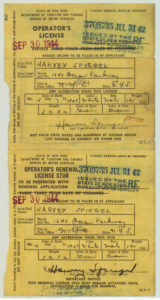
United States Army
Cromnick, Harry, S/Sgt., 32167040
United States Army, 44th Infantry Division, 71st Infantry Regiment
Prisoner of War at Stalag 3B (Furstenberg, Germany)
Mr. Hyman Cromnick (father), Alex (brother), 120 West 54th St., Bayonne, N.J.
Casualty List (List of Liberated POWs) 6/4/45
American Jews in World War II – Not listed
Goldsmith, Clifford H., Pvt., 42050862
United States Army, 34th Infantry Division, 168th Infantry Regiment
Prisoner of War at Stalag 7A (Moosburg, Germany)
Mr. Fred Singer (brother-in-law), 680 West 204th St., New York, N.Y.
Casualty List 4/1/45; List of Liberated POWs 6/21/45
American Jews in World War II – Not listed
Greenberg, Sam, Pvt., 33699813
United States Army, 34th Infantry Division, 168th Infantry Regiment
Prisoner of War at Stalag 7A (Moosburg, Germany); German POW # 142238
Mrs. Geraldine R. Greenberg (wife), 43 South Remington Road, Columbus, Oh.
Mr. Paul Greenberg (father), 2328 Sherbrook St., Pittsburgh, Pa.
Employee of Frank and Seder’s Department Store
List of Liberated POWs 6/5/45
Pittsburgh Press 3/21/45
American Jews in World War II – Not listed
Ratner, Alvin J., T/5, 32702618
United States Army, 44th Infantry Division, 71st Infantry Regiment
Prisoner of War at Stalag 12A (Limburg an der Lahn, Germany)
Mrs. Sarah Ratner (mother), 85-37 91st St., Woodhaven (Brooklyn?), N.Y.
Lists of Liberated POWs 6/10/45, 6/14/45
Casualty List 4/19/45
American Jews in World War II – Not listed
Wounded
Canada
Gilboord, Norman, Gunner, B/18743
Canada, Royal Canadian Artillery
310 Roxton Road, Toronto, Ontario, Canada
Canadian Jews in World War II – Part II: Casualties – 98
United States
Etkin, Morris S., Cpl., 33173559, Purple Heart (France)
United States Army
Wounded
Born 1914
Mrs. Gussie R. Etkin (wife), 513 Reed St., Philadelphia, Pa.
Jewish Exponent 3/9/45
Philadelphia Inquirer, Philadelphia Record 2/28/45
American Jews in World War II – 519
Kaiser, Arthur, Pvt., 32000743, Purple Heart (France)
United States Army
Wounded
Born 1913
Mrs. Fannie Kaiser (mother), 307 Fox Hill Place, Exeter, Pa.
Mrs. Esther Burmil (sister), 207 Fox Hill Place, Pittston, Pa.
Originally from New York, N.Y.; Worked at Lee Manufacturing Company, West Pittston, Pa.
Wilkes-Barre Record 1/11/45
American Jews in World War II – 530
Another incident…
Witness to the loss of two B-17s
Tolochko, Joseph S., 2 Lt., 0-820102, Bomber Pilot, Air Medal, 6 Oak Leaf Clusters, 35 missions
United States Army Air Force, 8th Air Force, 398th Bomb Group, 600th Bomb Squadron
Born in Pennsylvania
Mr. and Mrs. M. Leon and Bess Tolochko (parents), Dorothy and Jacob (sister and brother), 5840 Phillips Ave., Pittsburgh, Pa.
Jewish Criterion (Pittsburgh) 2/9/45
American Jews in World War II – Not listed
On 11/26/44, witness to loss of two B-17s:
1) B-17G 43-37846 (“N8 * T”, “Phony Express”), Pilot 1 Lt. Kermit R. Pope, 10 crew – all survived ; MACR 11144, Luftgaukommando Report KU 3371
An image of the wreck of Phony Express (near Velswijk, in the Eastern Netherlands) via the American Air Museum in England, taken by the grandfather of American Air Museum Contributor Fer Radstake… The appearance of the bedraggled wreck (sans engines and armament, with a multitude of holes in the airframe) suggests that the plane had received ample attention from souvenir hunters.
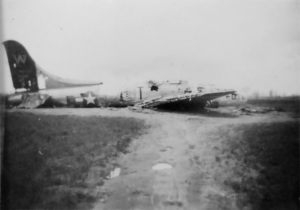 2) B-17G 42-97740 (“N8 * Q”), Pilot Capt. Gene L. Douglas, 10 crew – all survived; MACR 11146, Luftgaukommando Report KU 3375
2) B-17G 42-97740 (“N8 * Q”), Pilot Capt. Gene L. Douglas, 10 crew – all survived; MACR 11146, Luftgaukommando Report KU 3375
On 11/30/44, witness to loss of another B-17:
Aircraft 43-38463 (“N8 * X”), Pilot 1 Lt. Roger J. Weum, 10 crew – 7 survivors; MACR 11145
The February 9, 1945 issue of Pittsburgh’s Jewish Criterion, which – as was typical through the war – presented in every issue news about Jewish servicemen from Pittsburgh and the surrounding area.
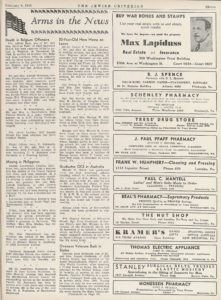 A news item about Lieutenant Tolochko, whose name never appeared in American Jews in World War II.
A news item about Lieutenant Tolochko, whose name never appeared in American Jews in World War II.
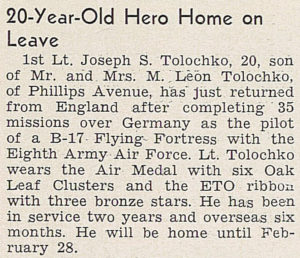
Acknowledgement
Special thanks to Avi Gold, for Hebrew and Yiddish scholarship and translation!
References
Books
Abelow, Samuel P., History of Brooklyn Jewry, Scheba Publishing Company, Brooklyn, N.Y., 1937
Caldwell, Don, and Muller, Richard, Luftwaffe Over Germany: Defense of the Reich, Frontline Books, Barnsley, South Yorkshire, England, 2014
Carter, Kit C., and Mueller, Robert, Combat Chronology – U.S. Army Air Forces in World War II, 1941-1945, Center for Air Force History, Washington, D.C., 1991
Chiche, F., Livre d’Or et de Sang – Les Juifs au Combat: Citations 1939-1945 de Bir-Hakeim au Rhin et Danube, Edition Brith Israel, Tunis, Tunisie, 1946
Dorr, Robert F., B-24 Liberator Units of the Eighth Air Force (Osprey Combat Aircraft 15), (Mark Rolfe, Illustrator), Osprey Publishing, Inc., 1999
Dublin, Louis I., and Kohs, Samuel C., American Jews in World War II – The Story of 550,000 Fighters for Freedom – Compiled by the Bureau of War Records of the National Jewish Welfare Board, The Dial Press, New York, N.Y., 1947
Forman, Wallace F., B-24 Nose Art Name Directory, Specialty Press Publishers and Wholesalers, North Branch, Mn., 1996
Freeman, Roger A., The Mighty Eighth – A History of the U.S. 8th Army Air Force, Doubleday and Company, Inc., New York,. N.Y., 1970
Freeman, Roger A., and Osborne, David, The B-17 Flying Fortress Story: Design – Production – History, Arms & Armour Press, London, England, 1998
Kamarainen, Edwin, This Is War and We Are Prisoners of the Enemy, lulu.com, June 5, 2007
Morris, Henry, Edited by Gerald Smith, We Will Remember Them – A Record of the Jews Who Died in the Armed Forces of the Crown 1939 – 1945, Brassey’s, United Kingdom, London, 1989
Rottman, Gordon, US Army Air Force: 1, Osprey Publishing Ltd., London, England, 1993 (with color plates by Francis Chinn)
Other Works
Binghamton Press, February 23, 1945, “Two Binghamton Lieutenants Win New Honors in Battles in Air: Harold Lanning Awarded DFC; Richard Bailey Hits Nazi Plane” (via FultonHistory.com)
Canadian Jews in World War II – Part II: Casualties, Canadian Jewish Congress, Montreal, Quebec, Canada, 1948
The Story of the 390th Bombardment Group (H) (Privately printed for the Men and Officers of the 390th Bombardment Group 1947), 1947
The 491st Bombardment Group (H) Inc., “Ringmasters”: History of the 491st Bombardment Group (H), Taylor Publishing Company, Dallas, Tx., 1992
USAAF Credits for the Destruction of Enemy Aircraft, World War II, USAF Historical Study No. 85, Office of Air Force History, Albert F. Simpson Historical Research Center – Air University, 1985
Websites
Misburg-Anderten, Germany, at Wikipedia
Deurag-Nerag Synthetic Oil Refinery, Germany
Eighth Air Force Historical Society – Missions by Date – November 26, 1944
Eighth Air Force Historical Society – Mission to Deurag-Nerag Industry Oil Refinery, Misburg, Germany – November 26, 1944
445th Bomb Group – Kassel Mission of September 27, 1944
The Kassel Mission Historical Society
491st Bomb Group
B-24J 42-110167, at B-24 Best Web
Jagdgeschwader 301 History, at Wikipedia
8/25/18
 Murofchick, Edward, Pvt., 32897836, Purple Heart, Casualty in Europe
Murofchick, Edward, Pvt., 32897836, Purple Heart, Casualty in Europe


























